PHOTOS: Snowy Riversides and Magical Mountains of Croatia in January 2022
January 28, 2022 – The snowy riversides and magical mountains of Croatia in January 2022 show a spectacular and all-natural winter wonderland.
Snow finally stuck to the streets of central Zagreb for a couple of days this week. Early morning temperatures dropped to the lowest yet of this winter. Despite the chill, clear skies and sunshine days were enough to see the snow soon melt away.
But, far from the city, the snowy riversides and magical mountains of Croatia in January 2022 have kept their white blanket for longer. These all-natural landscapes look epic after the snowfall. For winter walkers and climbers – or even just lovers of photography – these images are way more spectacular than the bright lights and theatre of the Advent season.
Let's take a closer look at the winter wonderland of snowy riversides and magical mountains of Croatia in January 2022.
Gorski Kotar
Delnice, Lokve, Fužine, Stara Sušica, Ravna Gora
 © Turistička zajednica Gorskog kotara
© Turistička zajednica Gorskog kotara
 © Turistička zajednica Gorskog kotara
© Turistička zajednica Gorskog kotara
 From above, Dvorac Stara Sušica © Vladimir Franolić
From above, Dvorac Stara Sušica © Vladimir Franolić
 © Branko Lautar & Višnja Bolf
© Branko Lautar & Višnja Bolf
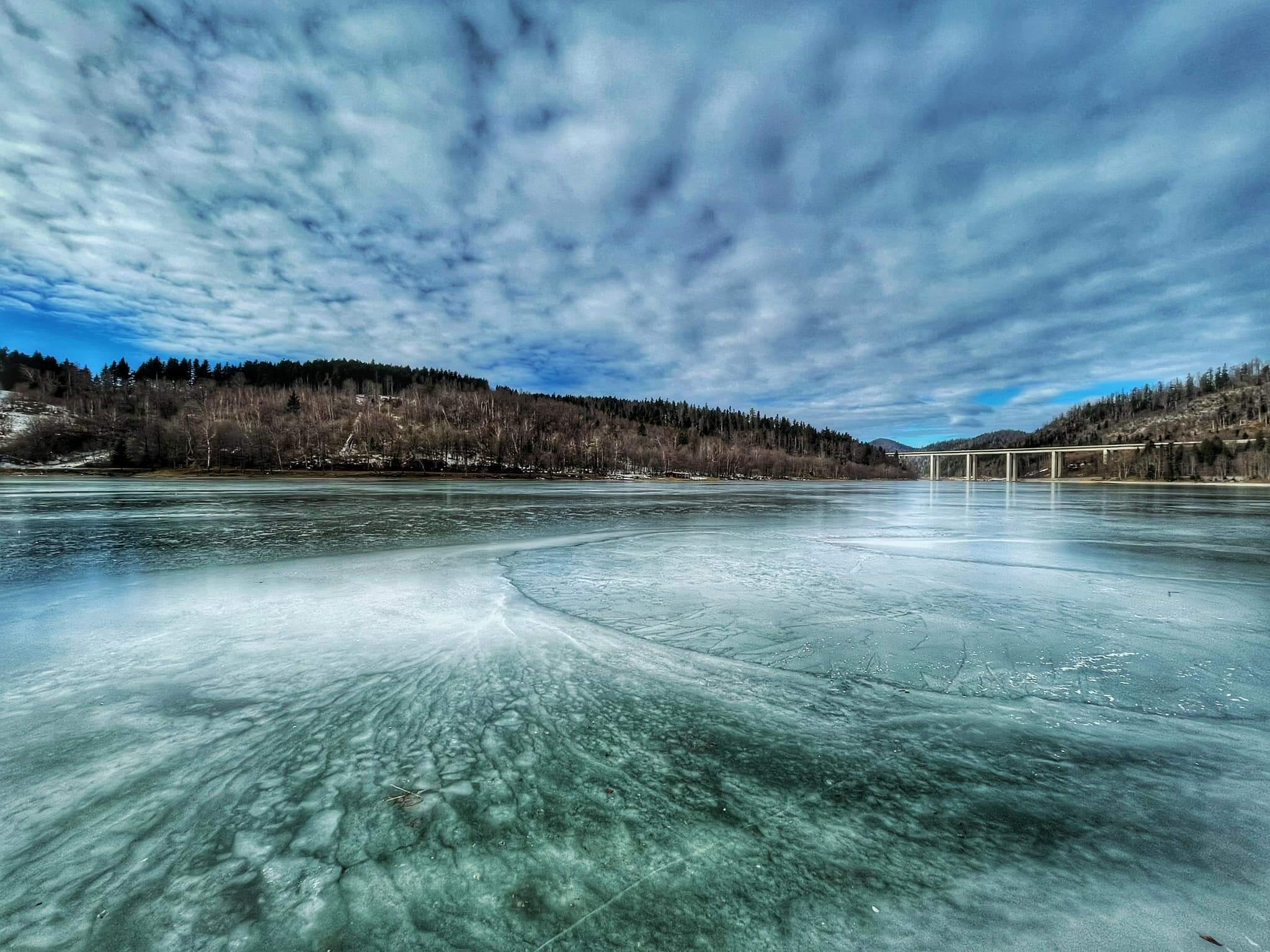 Jezero Bajer near Fužine © Marino Kirinčić
Jezero Bajer near Fužine © Marino Kirinčić
 © Branko Lautar & Višnja Bolf
© Branko Lautar & Višnja Bolf
 © Turistička zajednica Gorskog kotara
© Turistička zajednica Gorskog kotara
 Another view of Dvorac Stara Sušica © Branko Lautar & Višnja Bolf
Another view of Dvorac Stara Sušica © Branko Lautar & Višnja Bolf
Risnjak National Park and Snježnik Hrvatski
 © Risnjak National Park
© Risnjak National Park
 Snježnik hrvatski © Ivan Ćuća-Žentil
Snježnik hrvatski © Ivan Ćuća-Žentil
 Snježnik hrvatski © Ivan Ćuća-Žentil
Snježnik hrvatski © Ivan Ćuća-Žentil
 Snježnik hrvatski © Ivan Ćuća-Žentil
Snježnik hrvatski © Ivan Ćuća-Žentil
 Snježnik hrvatski © Ivan Ćuća-Žentil
Snježnik hrvatski © Ivan Ćuća-Žentil
 Snježnik hrvatski © Ivan Ćuća-Žentil
Snježnik hrvatski © Ivan Ćuća-Žentil
 Snježnik hrvatski © Ivan Ćuća-Žentil
Snježnik hrvatski © Ivan Ćuća-Žentil
 Snježnik hrvatski © Ivan Ćuća-Žentil
Snježnik hrvatski © Ivan Ćuća-Žentil
For more about Risnjak National Park, look here
Velebit
Northern Velebit National Park
 © Dejan Delač
© Dejan Delač
 © Dejan Delač
© Dejan Delač
 © Vedran Katalinić
© Vedran Katalinić
For more about Northern Velebit National Park, look here
Velebit Nature Park
 Ljubičko Brdo © Ivan Ćuća-Žentil
Ljubičko Brdo © Ivan Ćuća-Žentil
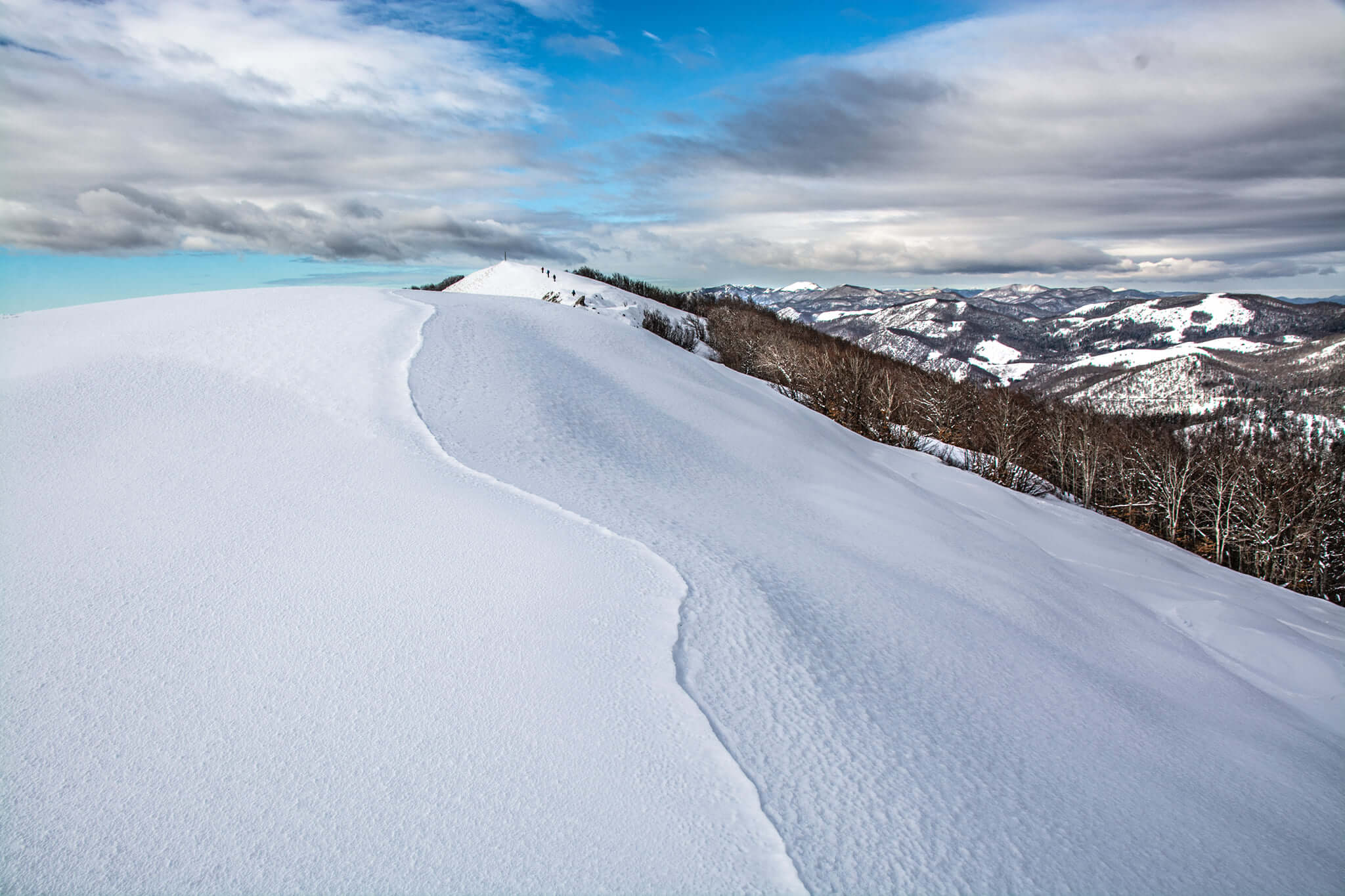 Ljubičko Brdo © Ivan Ćuća-Žentil
Ljubičko Brdo © Ivan Ćuća-Žentil
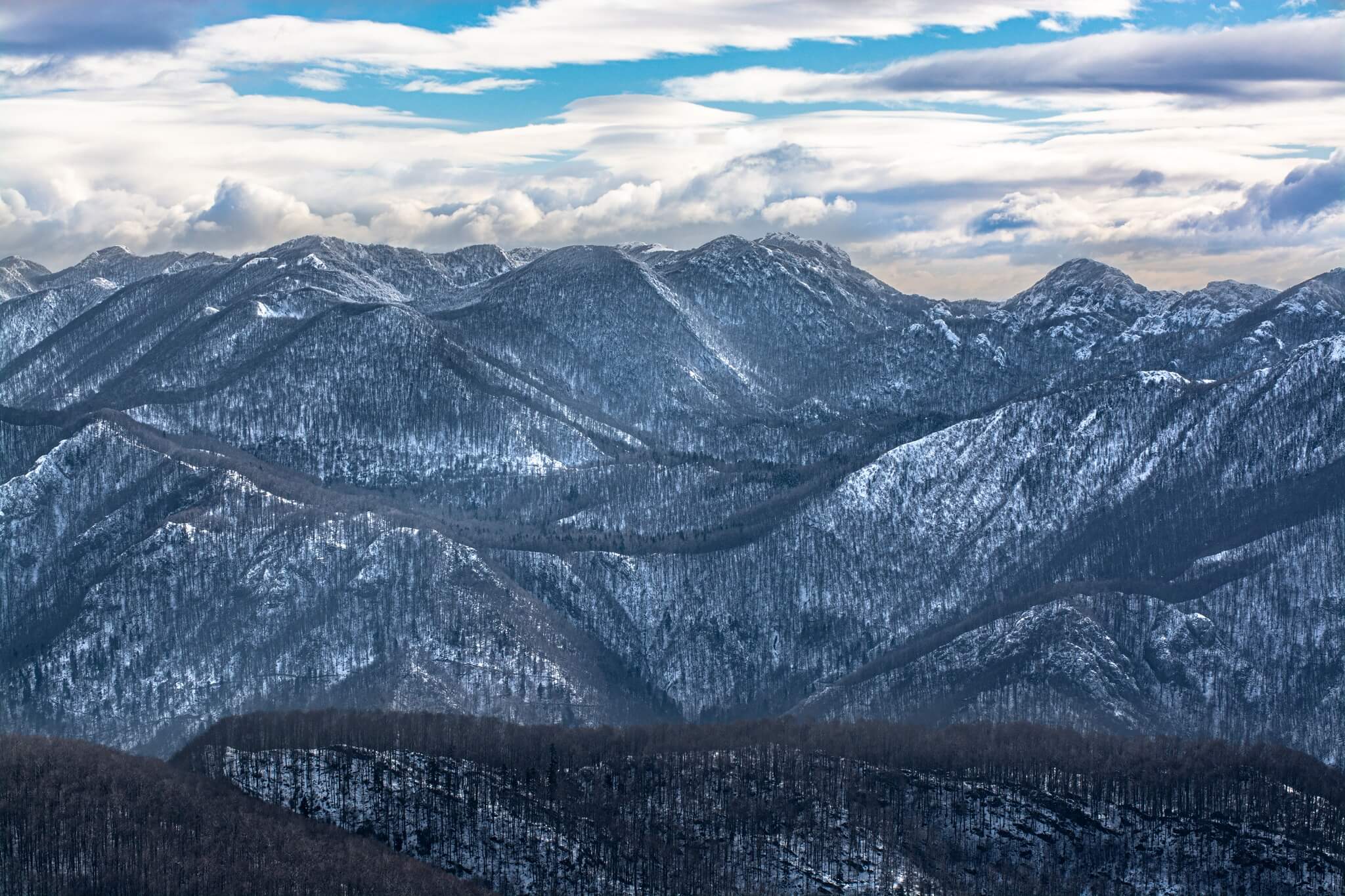 Ljubičko Brdo © Ivan Ćuća-Žentil
Ljubičko Brdo © Ivan Ćuća-Žentil
 Ljubičko Brdo © Ivan Ćuća-Žentil
Ljubičko Brdo © Ivan Ćuća-Žentil
 Ljubičko Brdo © Ivan Ćuća-Žentil
Ljubičko Brdo © Ivan Ćuća-Žentil
Paklenica National Park
 © Mario Jurina
© Mario Jurina
 Bojinac © Ivan Coric Photography
Bojinac © Ivan Coric Photography
 Bojinac © Ivan Coric Photography
Bojinac © Ivan Coric Photography
For more about Paklenica National Park, look here
Kloštar Podravski, Podravina and Koprivnica-Križevci County
 © Ivan Nemet
© Ivan Nemet
 © Ivan Nemet
© Ivan Nemet
 © Ivan Nemet
© Ivan Nemet
 © Ivan Nemet
© Ivan Nemet
 © Ivan Nemet
© Ivan Nemet
 © Ivan Nemet
© Ivan Nemet
 © Ivan Nemet
© Ivan Nemet
 © Ivan Nemet
© Ivan Nemet
 © Ivan Nemet
© Ivan Nemet
For more about the Drava river in Koprivnica-Križevci County look here. For more about the area of Podravina containing Kloštar Podravski and Đurđevac, look here
Slavonski Brod
 © Mirna Šikić
© Mirna Šikić
 The wetlands and ponds in Oriovac near Slavonski Brod are not only home to fish - over 50 species of birds visit these waters © Antun Lukšić
The wetlands and ponds in Oriovac near Slavonski Brod are not only home to fish - over 50 species of birds visit these waters © Antun Lukšić
For more about Slavonski Brod, look here
Žumberak-Samoborsko gorje Nature Park
 The high peak of Sveti Gera, on the western edge of Žumberak-Samoborsko gorje Nature Park © Domagoj Novosel
The high peak of Sveti Gera, on the western edge of Žumberak-Samoborsko gorje Nature Park © Domagoj Novosel
The author would like to thank each of the photographers who kindly loaned their work to him for this article
Best Day Trips from Zagreb: Križevci, Town on the Crossroads
December 16, 2021 – Just one hour from Zagreb, Križevci is surrounded by vineyards, cute villages, rolling hills of agriculture and the Kalnik mountains. With activities like hiking, cycling and horse riding and sights like the Greek Catholic Cathedral of the Holy Trinity, it's one of the best day trips from the Croatian capital
Every year, more and more people fly into Zagreb. Maybe they'll stay a few days before heading to the seaside? No surprise if they do - there's a lot to see in this modern European city.
Some don't even travel on to the coast. With famous Christmas markets, cultural events and opportunities for digital nomads, Croatia's capital has become a year-round destination with its own inexhaustible appeal. And, one of Zagreb's best aspects is the endless number of amazing day trips you can make from the city.
 © Mato Zeman
© Mato Zeman
The historic town of Križevci is one such day trip. First mentioned in 1193, it is one of the oldest medieval towns in the region. Certainly, you won't be the first to drop by.
 © Miroslav Stručić
© Miroslav Stručić
Križevci famously stands at the intersection of roads connecting Zagreb, Koprivnica, Bjelovar and Varaždin. For centuries it has welcomed visitors travelling along those routes.
 © Miroslav Stručić
© Miroslav Stručić
In the modern era, even more people passed through the town after it was included on the important Budapest to Rijeka rail line. Nowadays, it's one of the fastest train routes in Croatia. Indeed, your day trip from Zagreb to Križevci will only take around an hour by train or car. And there are plenty of great reasons why you should make the journey.
 Križevci train station © Miroslav Stručić
Križevci train station © Miroslav Stručić
Discover 8 churches and 20 wells
 © Miroslav Stručić
© Miroslav Stručić
Križevci is a nice small town to walk around. The town is named after the roads that cross here. To the south of the crossroads, the D22 in Križevci is more or less a tree-lined residential avenue. Today's town centre only really begins to the north of the crossroads. You'll notice the change immediately.
 © Miroslav Stručić
© Miroslav Stručić
The architecture here is older and more ornate. Welcoming you on one side of town is Strossmayer Square. On the opposite side, the small cute park on Antun Nemčić Square, then the church of Saint Anne (Sveti Ana). Remarkably, this pretty building is just one of 8 churches here, some of them dating back to the Middle Ages.
 © Mato Zeman
© Mato Zeman
In the oldest, the Gothic Church of Saint Cross, be sure to see the Baroque paintings and 18th-century marble altar. It's easy to catch sight of all 8 churches during a short walk around Križevci.
 © Miroslav Stručić
© Miroslav Stručić
Also worth looking out for are the 20 old wells dotted around the town. You'll have to come off the main road if you're going to find them all. If you've got a knowledge of Croatian language you'll have spotted that Križevci is actually plural. Originally, these were two different places. Can you see where the old upper town ends and lower town begins?
 © Željko Car
© Željko Car
Meet the horses at Imanje Plavec (Plavec Farm Estate and Stables)
 © Imanje Plavec
© Imanje Plavec
On their family farm estate just outside Križevci, the Plavec family of Sveti Petar Orehovac has been breeding horses for decades. It's a friendly place and famous in the local community. Hundreds of children from the area have visited here to learn about horses. Some volunteer on a regular basis – they help to feed and look after the horses. Also, they are taught how to saddle them and how to ride.
 © Marc Rowlands
© Marc Rowlands
It's obvious the horses love it here. Used to visitors, they approach anyone who comes close. They are curious and eager to make new friends. If you've never before been around horses, this is the perfect place to be introduced. Beginners can ride around the training enclosure on the farm, guided by one of the Plavec family.
 © Marc Rowlands
© Marc Rowlands
Alternatively, there are trail routes through the pretty surrounding countryside of Sveti Petar Orehovac. You don't have to ride to come and meet the horses here. You can just come to say hello. Also, there's the option of a carriage ride.
Try the great local food and drink: Križevačko pivo, wine of Križevci, Gornjevinska klet
 © Križevačko pivovara
© Križevačko pivovara
At Restoran Tomislav (here) in the centre of Križevci, you can sample the local beer. Križevačko (here) is the town's craft brewer and although they're not so old, their beer is already known all across Croatia. Their lager and dark beers only come as draft, so don't pass up the opportunity to try.
 © Mato Zeman
© Mato Zeman
While Križevačko has a good reputation with craft beer connoisseurs, the town of Križevci is actually much more famous for its wine.
 © Željko Car
© Željko Car
The Podolski family (here) grow their grapes on a hill above Carevdar, just outside of town. They have ninety thousand vines planted across 13 hectares of pristine, rolling hills. But, they make the wine in the centre of Križevci and you can visit. All of their wines are white – Graševina, Pinot Noir, Chardonnay and Yellow Muscat, except the Pinot Gris, which is more copper in colour. If you're lucky and it's been the right kind of weather, you might visit in a year when they've managed to make some of the extremely rare 'ledena berba' (frost harvest) wine.
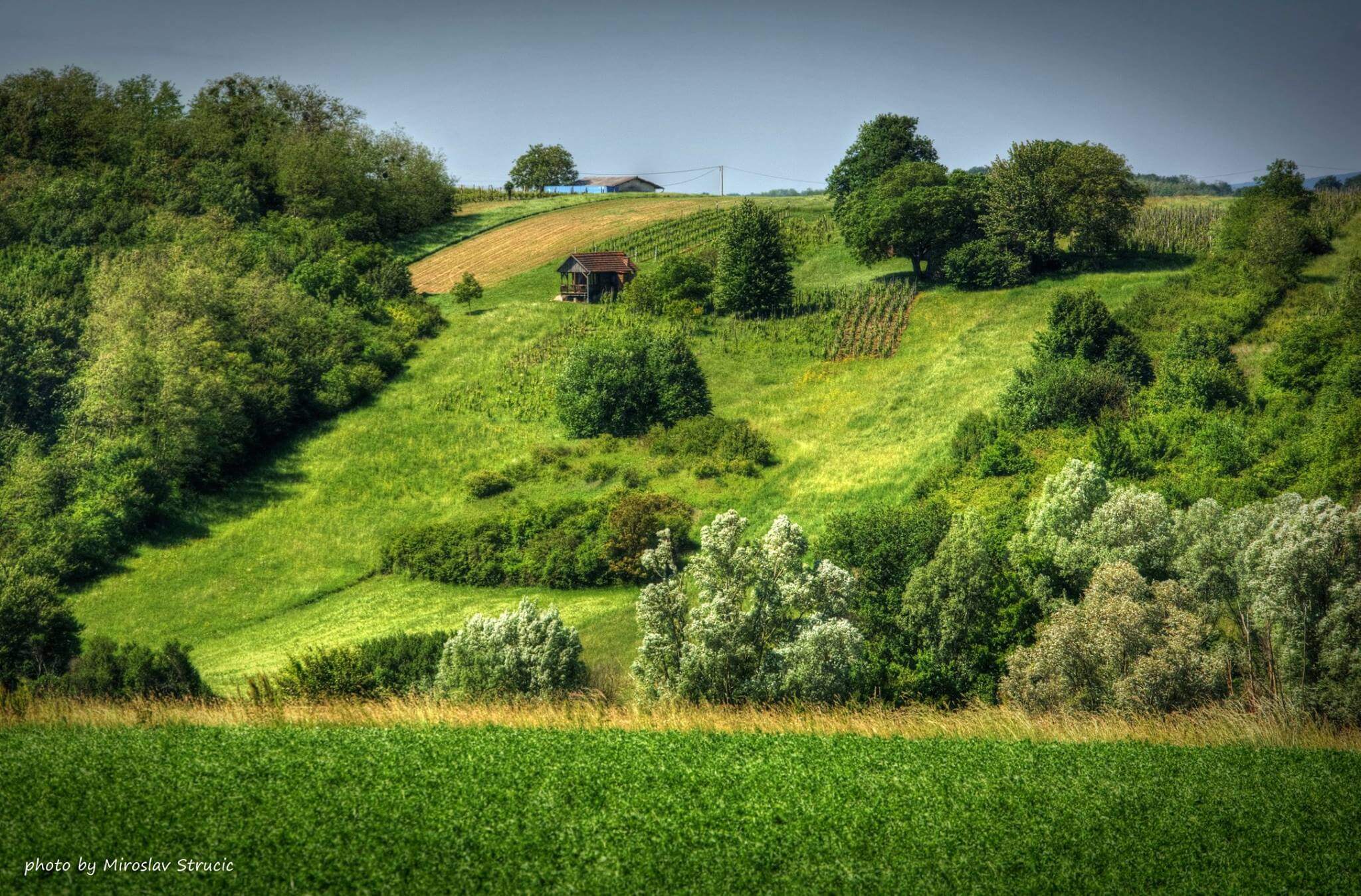 © Miroslav Stručić
© Miroslav Stručić
At the Korenko winery (here), they recommend you try their Graševina, Sauvignon Blanc and their special blended wine - Cuvée Elizabeta. They've won numerous awards at domestic and international competitions, including a gold medal for their Sauvignon at the Alpe Adria 2017. You'll find their winery, tasting area and the tiny chapel of St. Elizabeta in Brckovčina, not far from Križevci, in the wine-growing area of Mladina. With prior notice, you can visit for wine tasting and traditional food.
 © Mato Zeman
© Mato Zeman
OPG Dragutin Kamenjak (here) not only grows grapes for wine but also apples, some of which go to make an excellent apple cider vinegar. They have 4,500 vines in the areas of Greberanec and Cerovec which produce annually between 3,000-5,000 litres of wine. Several interesting varieties are grown here, including the rare Kleščec which is an indigenous variety of local Kalnik vineyards. Kamenjak also have Chardonnay, Pinot gris and Bouvier. The family farm is a member of the Križevci-Kalnik-Orehovec Wine Road and is available to visit by prior arrangement.
 © Miroslav Stručić
© Miroslav Stručić
Just across the road from Kamenjak's vines in Greberanec, you'll find one of the very best places to eat in Križevci. Gornjevinska klet (here) serve delicious food of this specific region. All of their ingredients are sourced locally, the food is freshly prepared and all of it is homemade.
 © Gornjevinska klet
© Gornjevinska klet
The tavern is tucked away, back from the main road and surrounded by peaceful nature. At the end of the garden, a play area to keep children occupied until the food arrives. In warmer months, dishes are served to sun-shaded wooden tables outside or in the homely, rustic interior when it's cold.
 © Gornjevinska klet
© Gornjevinska klet
See spectacular views from Kalnik
 © Marc Rowlands
© Marc Rowlands
To the immediate north of Križevci, not 10 km out of town, you'll find the remarkable mountains of Kalnik. These ancient peaks form a natural border between the historic Croatian regions of Zagorje, Prigorje and Podravina. To their west is Zagreb County, to the south and east is Koprivnica- Križevci County and to their north is Varaždin County.
 Kalnik © Koprivnica-Križevci County Tourist Board
Kalnik © Koprivnica-Križevci County Tourist Board
Take your car to the mountain lodge not far from the peak of Mount Kalnik itself. It's just a short walk up to the ruins of the castle fortress on top. From there, you get spectacular views of the verdant valley that sits below. The vineyards, orchards and fields of agriculture you see from here produce the amazing wine and food you'll try in Križevci.
 © Željko Car
© Željko Car
Kalnik fortress was first mentioned in the 13th century and consists of three parts. The first part was built during the period of the Tatar invasion, and it's believed that King Bela IV hid here at that time. Of course, the fortress and its brilliant views are not the only thing to see.
 © Željko Car
© Željko Car
The mountain range is actually 16 kilometres long. On average, the peaks sit between 400 to 500 metres. Kalnik has two ridges that run parallel to one another. The one to the north is covered in forest. The southern one has protruding rocks.
 © Marc Rowlands
© Marc Rowlands
Hikers love to come and tackle the peaks of Vranilac and Mali Kalnik and see the rocks known as the Seven Teeth. A large section of Kalnička gora is protected, and one area near Mali Kalnik is designated as a special botanical reserve.
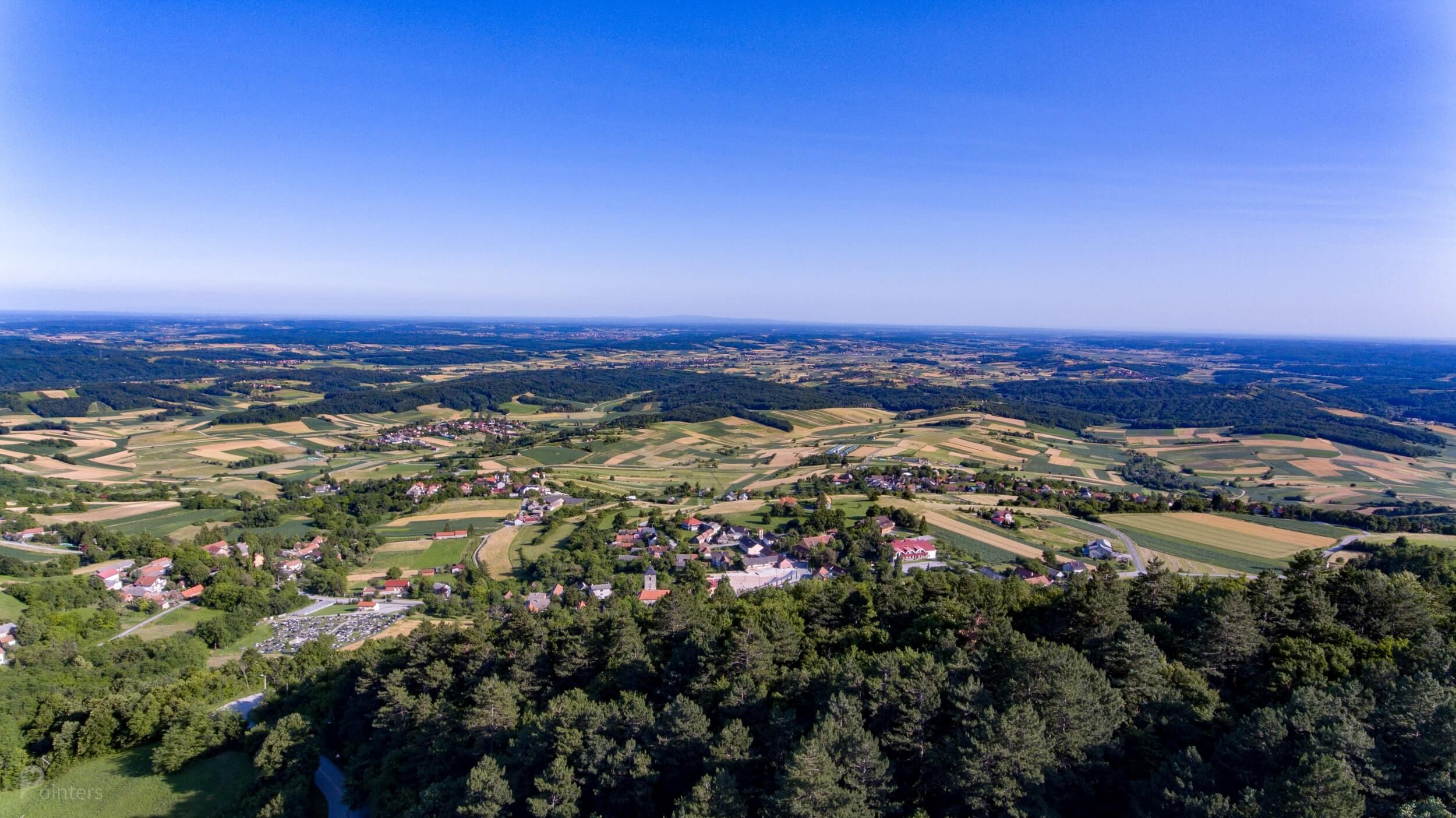 © Koprivnica-Križevci County Tourist Board
© Koprivnica-Križevci County Tourist Board
You can also explore the Kalnik mountains on an educational trail or on the picturesque strait of Vratno. On the latter, you encounter a playground, the Škrinja viewpoint and three caves.
Visit the architectural masterpiece of the Greek Catholic Cathedral of the Holy Trinity (Grkokatolička katedrala Svetog Trojstva Križevci)
 © Željko Car
© Željko Car
The most highly-prized buildings in Križevci are the Greek Catholic Cathedral of the Holy Trinity and its Episcopal Palace. They are architectural masterpieces not only of national significance but also for the wider region.
 © Mato Zeman
© Mato Zeman
This is the cathedral of Greek Catholics in Croatia, Slovenia and Bosnia-Herzegovina. Until 2001, this was also the cathedral of Greek Catholics in Serbia, Montenegro and North Macedonia.
 © Mato Zeman
© Mato Zeman
The building's origins go all the way back to an Augustinian monastery that was built here in the 14th century. Ottoman armies destroyed it, but the Franciscans rebuilt it in 1627. They inhabited the church until 1786, at which point Emperor Joseph II decided it would be put to better use by the military.
 © Mato Zeman
© Mato Zeman
By 1791, the military had left and the church returned to its original use. Reconstruction of the church was carried out by bishop Silvije Bubanović, who dedicated it in the year 1798. The cathedral's Baroque architecture was added during these reconstructions.
 © Marc Rowlands
© Marc Rowlands
The most significant remodelling of the cathedral's interior and exterior took place between 1895 and 1897, during the reign of Bishop Julije Drohobecki. Plans for this reconstruction were made by architect Hermann Bollé, famous for his work at Đakovo cathedral and in Zagreb - its cathedral, Mirogoj cemetery and the Museum of Arts and Crafts.
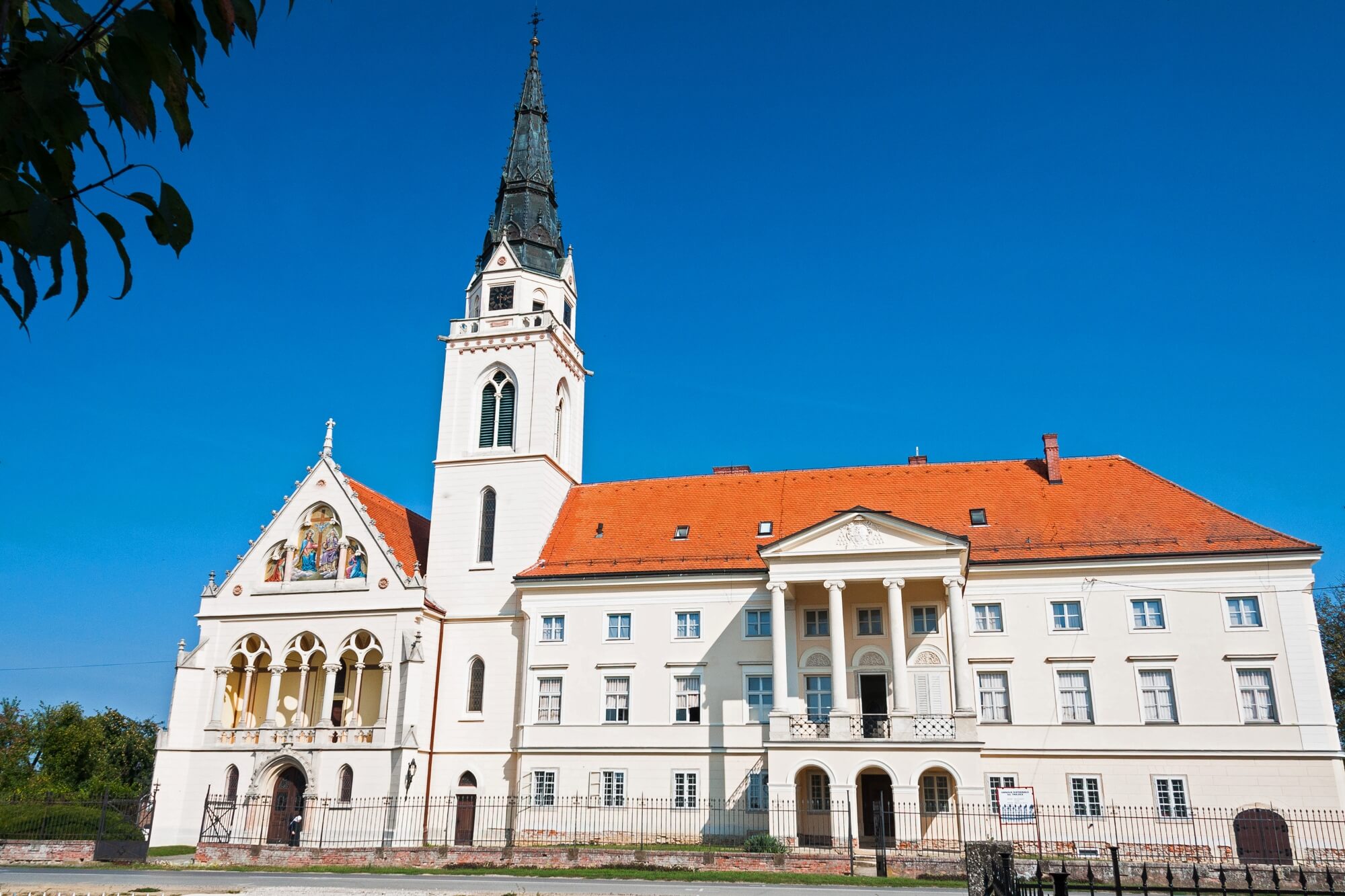 © Mato Zeman
© Mato Zeman
The Neo-Gothic features of the Greek Catholic Cathedral of the Holy Trinity date from this renovation. So too do most of the incredible paintings and works of art found inside. Bishop Julije Drohobecki was a significant enthusiast of art. He commissioned the leading Croatian painters of the day to decorate the cathedral's interior - Bela Čikoš Sesija, Ivan Tišov, Ferdo Kovačević, Celestin Mato Medović and others.
 © Mato Zeman
© Mato Zeman
Located on the first floor of the eastern block of the bishop's residence is the Library of the Bishops of Greek Catholicism. It contains around five thousand books dating from the 15th century, including 42 editions from the 16th century, around 180 editions from the 17th century, around 70 manuscripts and a particularly rich collection of dictionaries. Some of the books are extremely rare. Among them, the Missalum Zagrebiensis from 1506, printed in Venice and the first Bible printed in the Croatian language by Petar Katančić in 1831 in Buda.
 © Marc Rowlands
© Marc Rowlands
Another fascinating aspect of the cathedral is the absence of musical instruments. In services, songs are sung unaccompanied in the Old Church Slavonic language – the first Slavic literary language. Documents used within the liturgy are written in the Cyrillic alphabet. The cathedral is home to several monks, who have strict daily rituals regarding prayer, silence and solitude. But, by prior arrangement, they are very happy to welcome you inside and show you around.
This article was produced with the kind co-operation of Koprivnica-Križevci County Tourist Board (here). Both the author and Total Croatia News would like to extend their sincere thanks to the following photographers who generously lent their images to this work - Mato Zeman, Miroslav Stručić and Željko Car. Thanks also to Ivan Nemet and Sonja Badalić.
Discovering Đurđevac: Legend of the Rooster and Croatia's Only Desert
October 28, 2021 – Where the fields and vineyards of the lower Bilogora foothills meet the Drava floodplain and Croatia's only desert, you find the town of Đurđevac.
The east of Croatia is not known for its mountains. And yet, a long stretch of more or less continuous hills separates the Drava river's long valley from the rest of Croatia. For around 80 kilometres, part of the task is taken by the relatively low-lying Bilogora mountains.
The land between the mountains and the river slopes gently from foothills to floodplains. It is fertile, filled with vineyards and fields of agriculture. But, inexplicably, within this terrain, you'll find a desert.
This remarkable anomaly is the only such sand-filled wilderness in the country. And it is at this point - where the fields and vineyards of the lower foothills meet the floodplain and the Croatian desert - you find the town of Đurđevac.
Old Town Đurđevac (Stari grad Đurđevac)

Old Town Đurđevac is the most iconic building in this part of Croatia. Given its name, you could be forgiven for thinking this fortified structure is the origin of the town. Not so. Located just to the south, Đurđevac was already an established village when, in the 1480s, Bishop of Pécs Sigismund Ernušt commissioned the defensive fort. It was built in response to the rising threat of the Ottomans from the east.
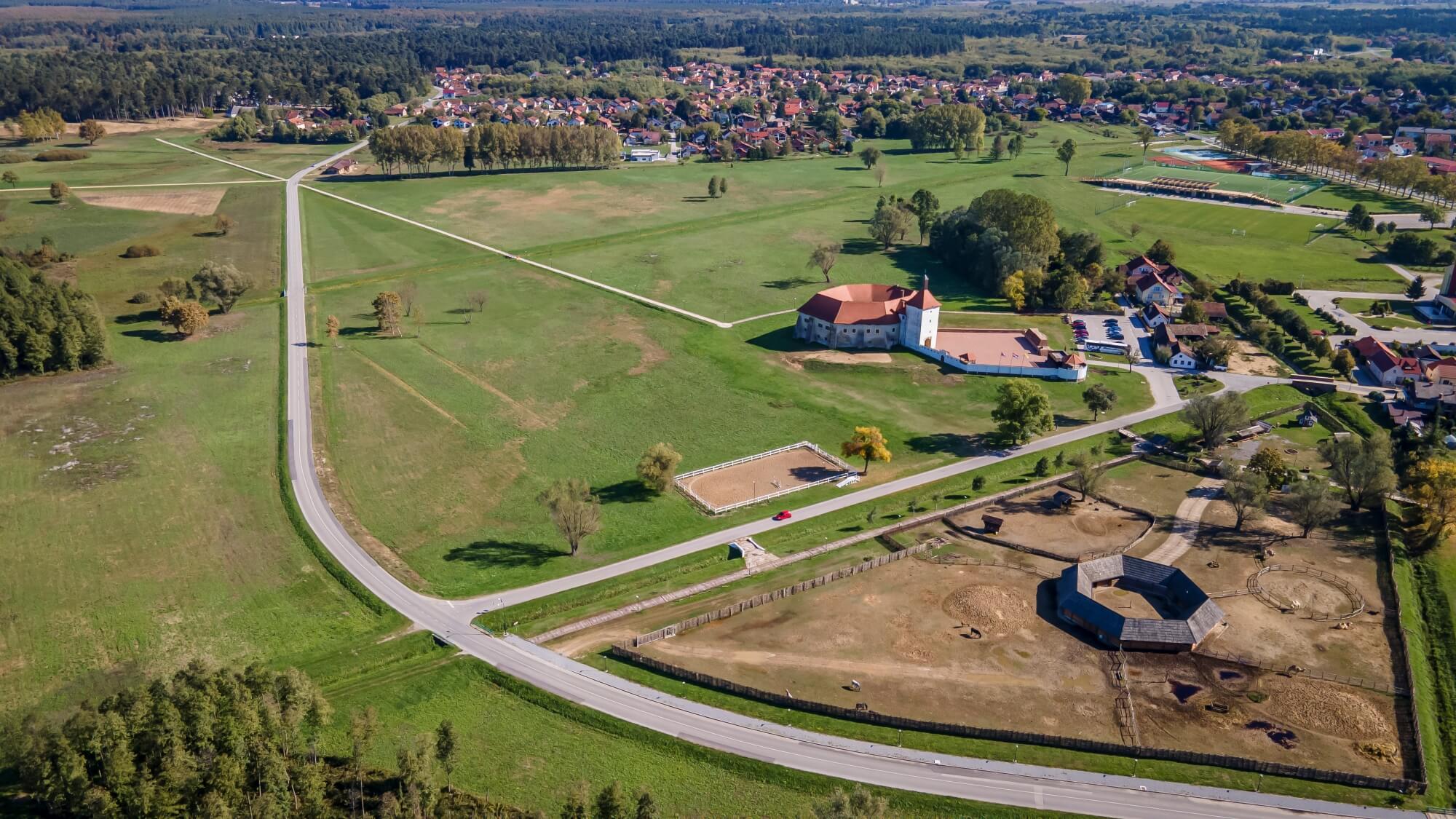 © Ivan Nemet
© Ivan Nemet
The land on which the original village and Old Town was placed is wet - river meadows in the floodplain of the Drava. Still to this day, you'll not find anything built on this partial swamp for over two kilometres to the north of Stari grad Đurđevac. Like buildings in the original settlement, the fortification was constructed on sandbanks created to elevate the building from the marshland. Its location and sturdy, defensive build - with surrounding walls and 9-metre tower – served the town well. Though besieged many times, Old Town Đurđevac never fell.
 © Mato Zeman
© Mato Zeman
Today, Stari grad Đurđevac holds important art and artefacts of the town. Inside, you'll find the Picokijada Interpretation Centre and Đurđevac City Museum. The former explains the legend behind the town's greatest annual event. The latter holds one of the region's most important collections of paintings, statues and artistic posters, much of it a donation made by local artist Ivan Lacković. But, this building is not only a relic and reminder of the past.
 © Željko Car
© Željko Car
By day, re-enactments and events take place in the walled courtyard. By night, youngsters of the town often gather here. On the ground floor of the main fortress, an open-air bar and restaurant. It is one of the best places in town to eat.
 © Mato Zeman
© Mato Zeman
Authentic food of Đurđevac
 Award-winning cheeses, fresh from the farm shop at Family Farm Imbrišić (here) in Kozarevac, near Đurđevac © Marc Rowlands
Award-winning cheeses, fresh from the farm shop at Family Farm Imbrišić (here) in Kozarevac, near Đurđevac © Marc Rowlands
Recognisable as the cuisine of continental Croatia, you have to look a little closer to identify the distinct menu of Podravina and Đurđevac. Meat preserved as sausages and river fish from the nearby Drava feature on the Đurđevac menu, as they do a little further downstream in Slavonia. But, Đurđevac and Podravina have a much greater tradition of dairy products than Slavonia. You'll find many local cheeses on the menu at Restoran i pivnica Stari grad (here), within the walls of Old Town Đurđevac and at Restaurant Đurđevečka iža (here), inside the town's Hotel Picok. The fresh river fish from the Drava you can try year-round at nearby Ribička hiža (here).

Croatian Sahara (Hrvatska Sahara): Stari grad Đurđevac Zoo
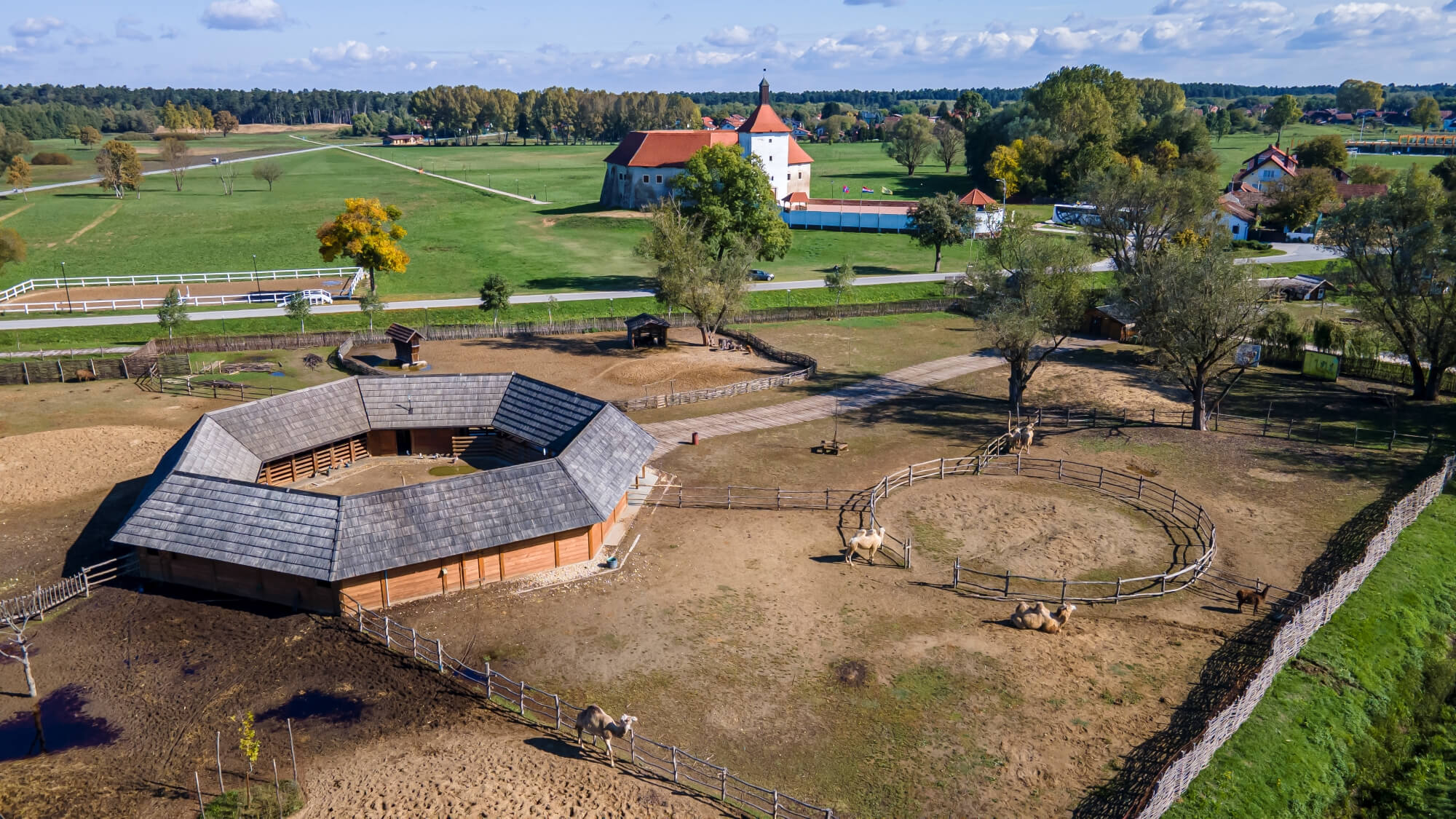 © Ivan Nemet
© Ivan Nemet
Sitting just next to Stari grad Đurđevac, Hrvatska Sahara is the small zoo of the town. It is titled after the Croatian Sahara, a near-forgotten moniker for the desert nearby. And, just like in the deserts of North Africa, the Levant and the Arabian Peninsula, you'll here find camels. They share the sands with goats, donkeys, horses, chickens, peacocks and llamas.
 © Ivan Nemet
© Ivan Nemet
Natural assets: Đurđevac Sands (Đurđevački pijesci) - the only desert in Croatia
 © Mato Zeman
© Mato Zeman
Born high in the Alps of Italy, the Drava river crashes down 1000 metres through Austria and Slovenia before reaching Croatia. Any rock that falls on the same path is pulverised by the time it reaches here. Formed by deposited glacier sediment, the sandy riverbanks of the Drava and the Đurđevački pijesci are testament to this. Đurđevački pijesci are simply sands of the river that were blown to this area by persistent, strong winds.
 © Mato Zeman
© Mato Zeman
There was a time when people sought to tame this wilderness. As recently as the 20th century, an active process to afforest the sands was underway. And it was successful. While Đurđevački pijesci cover around 20 hectares today, at one time they were known to stretch some 12 kilometres. In fact, the dunes were so vast that it wasn't uncommon for people, horses and carts to disappear in the desert. For this reason, the Croatian Sahara earned the more sinister nickname of the 'Bloody Sands'.
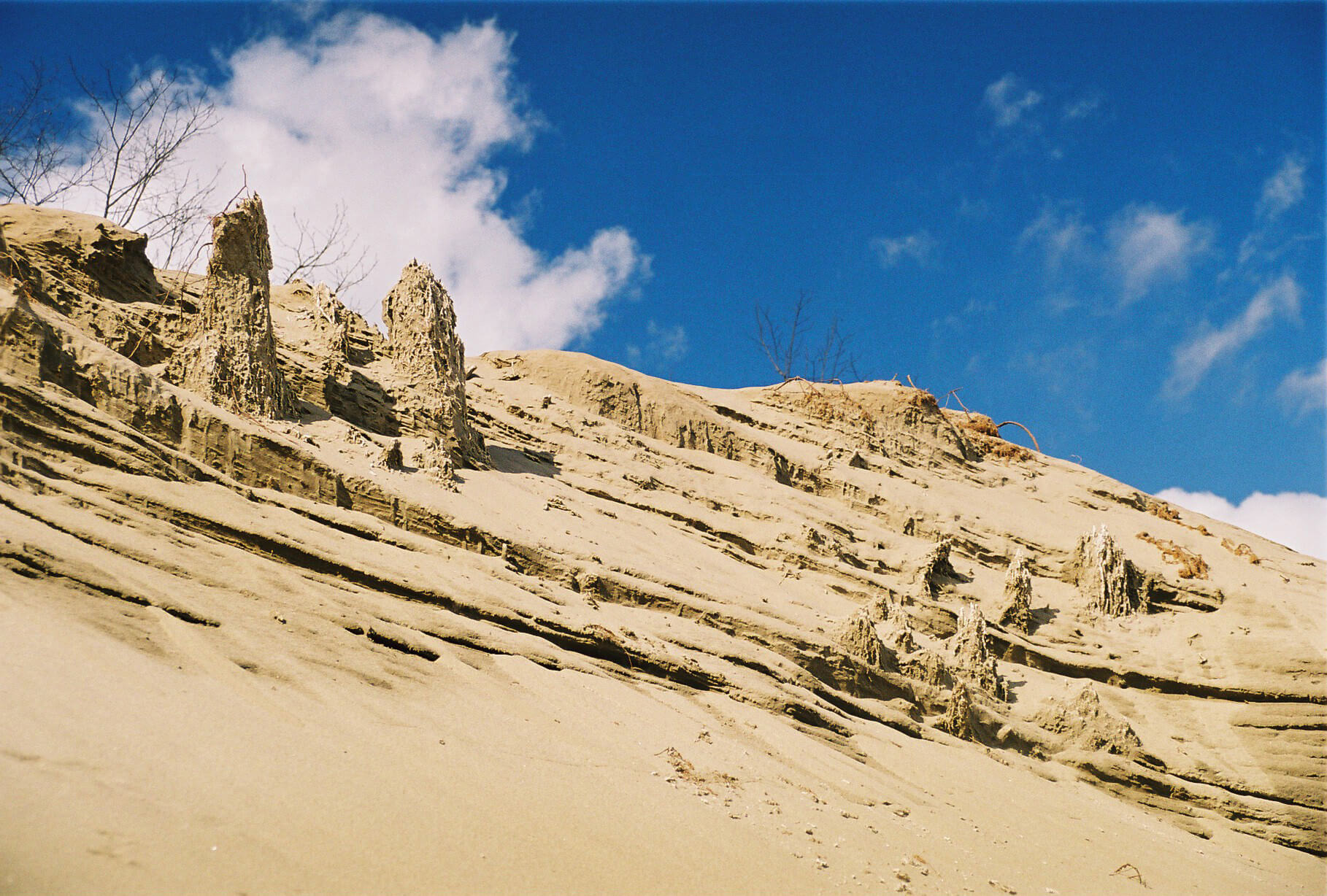 © Mato Zeman
© Mato Zeman
In 1963, part of the Đurđevački pijesci was declared a special geographical and botanical reserve. This protection now preserves the peculiarities of the vegetation here - only certain plants were able to adapt to living in this desert. Among them are several endemic species. Over 30 distinct species of butterfly can be found in and around the area of the sands. They can be seen when visiting Đurđevački pijesci, along with the spectacular dunes.
Đurđevac Sands Visitors Centre (Posjetiteljski centar Đurđevački pijesci)
 © Željko Car
© Željko Car
Within recent memory, the town's Picokijada Interpretation Centre found itself among the most popular museums in Croatia. Taking inspiration from its immersive experience, the Đurđevac Sands Visitors Centre is the next-generation version. At the time of writing, it is likely among the most modern, multimedia museum experiences in southeastern Europe.
On paper, a visitors centre dedicated to a geological irregularity doesn't sound that exciting. But, Đurđevac Sands Visitors Centre offers such an engaging experience, it's easy to see why kids don't want to leave.
Your journey begins not with a scientific explanation, but in the mysterious world of myths and folklore. In the roof space, a planetarium-like projection space introduces you to the local legends on which the region is founded. Thereafter, a series of rooms with different multimedia, augmented reality and interactive elements keep a firm grip of your attention. At the end of the tour, you've learned not only about the Đurđevac sands and the Drava river, but also the diverse fauna and flora that lives here.
Natural assets: Drava river
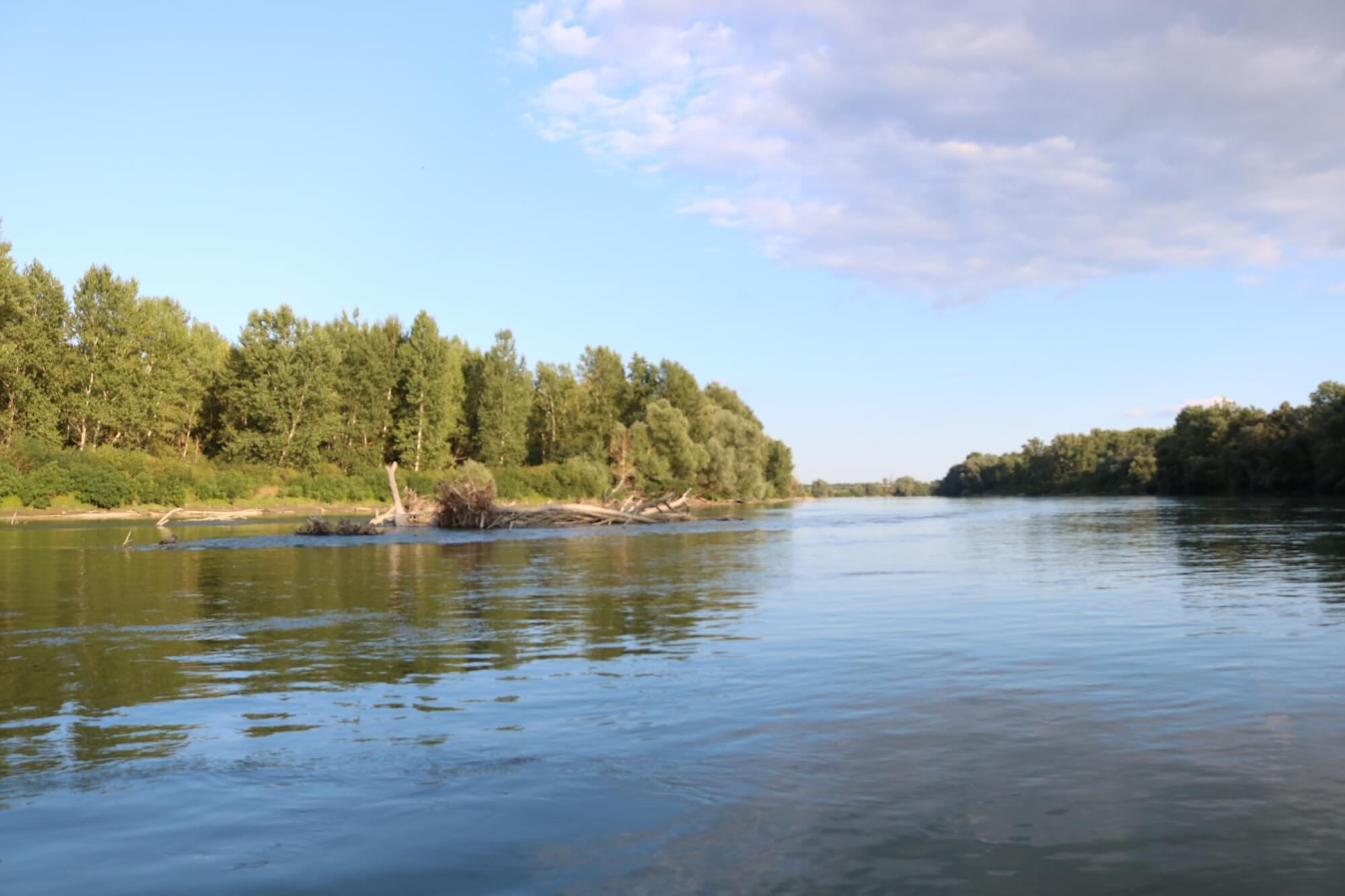 The Drava, near Durdevac © Marc Rowlands
The Drava, near Durdevac © Marc Rowlands
Although it doesn't run through the town, the Drava river shapes almost everything about Đurđevac. Certainly, the river is part of the reason the town is here. It informs not only the river fish section of the local menu but also the wine list. The incredible white wines that are made all around the town are a product of the sandy soil deposited by the river.
The river also offers the nearest recreational escape for town residents. Sitting less than 10 kilometres away, there's plenty of room on the banks for local fishermen and guests. So too, children on horseback. Canoeing, rafting and boating are great ways to see the river and its wildlife up close. If you want to learn more about the sights and activities available on the Drava river near Đurđevac, then look here.
Picokijada and the Legend of the Rooster (Legenda o picokima)
 © Željko Car
© Željko Car
While the Old Town fort remained unconquered by the Ottomans, that's not to say the invaders didn't try to overcome the town and those inside its walls. In fact, on at least one occasion, it's said they came very close to succeeding.
 © Mato Zeman
© Mato Zeman
The Legend of the Rooster (Legenda o picokima) tells the tale of the most famous encounter between the Ottoman forces and the town. So the story goes, leader of the attacking forces Ulama-beg encountered such unexpected resistance that he was unable to take the town fortress. He decided on an alternate strategy. By laying siege to the Old Town of Đurđevac, he hoped to exhaust the resources of the people and eventually starve them into submission.
 © Željko Car
© Željko Car
It almost worked. As it is told, the long siege took a terrible toll on the town. Food inside the walls had all but disappeared. Saved by an elderly woman of the town, there was only one small rooster left - in the Đurđevac dialect, a 'picok'. It wasn't nearly enough to feed all those inside. So, as a last roll of the dice, the old woman suggested the rooster instead be put in a cannon and fired into the Ottoman camp.
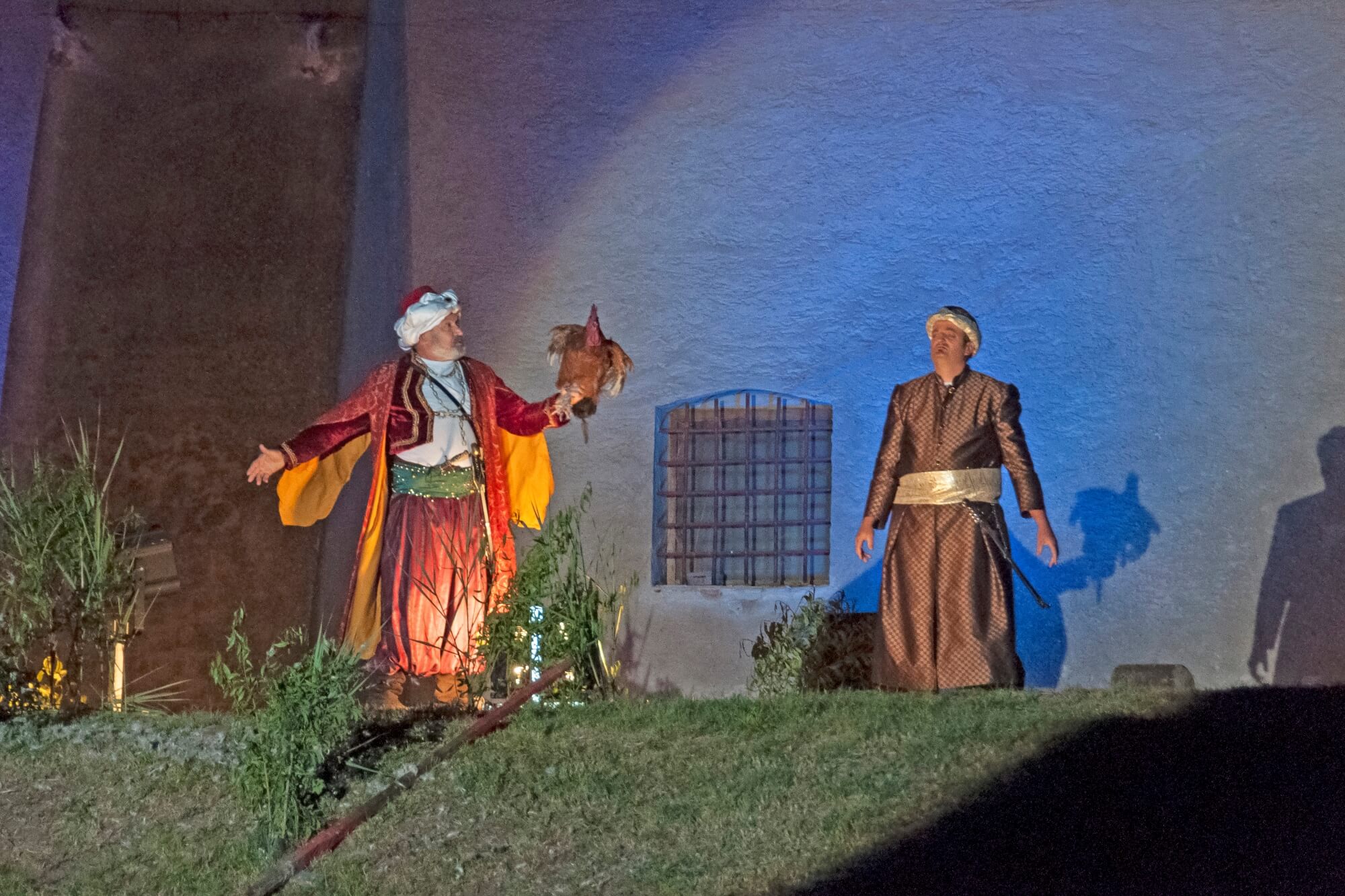 © Mato Zeman
© Mato Zeman
Exhausted themselves by the long siege, the Ottomans are said to have lost all heart upon seeing the bird shoot into their encampment. If there was still so much food that those inside could freely scatter and mock, surely there was no near end in sight? The ploy was successful. Ulama-beg gave up the siege and ordered a retreat from the battlefield, cursing the people of Đurđevac as 'picoki' as he left. It's a nickname they proudly keep to this day.
 © Ivan Nemet
© Ivan Nemet
The Picokijada is an annual re-enactment of this legend and is one of the most important cultural events in Koprivnica-Križevci County. It has been held at the end of June since 1968 and now takes place over three full days.
Since 2006, the event has been protected as an intangible cultural heritage of Croatia. It has a cast of thousands and draws many more thousands of visitors. Alongside the theatre and legend, Picokijada features sports, games, activities, a procession and a popular cake competition.
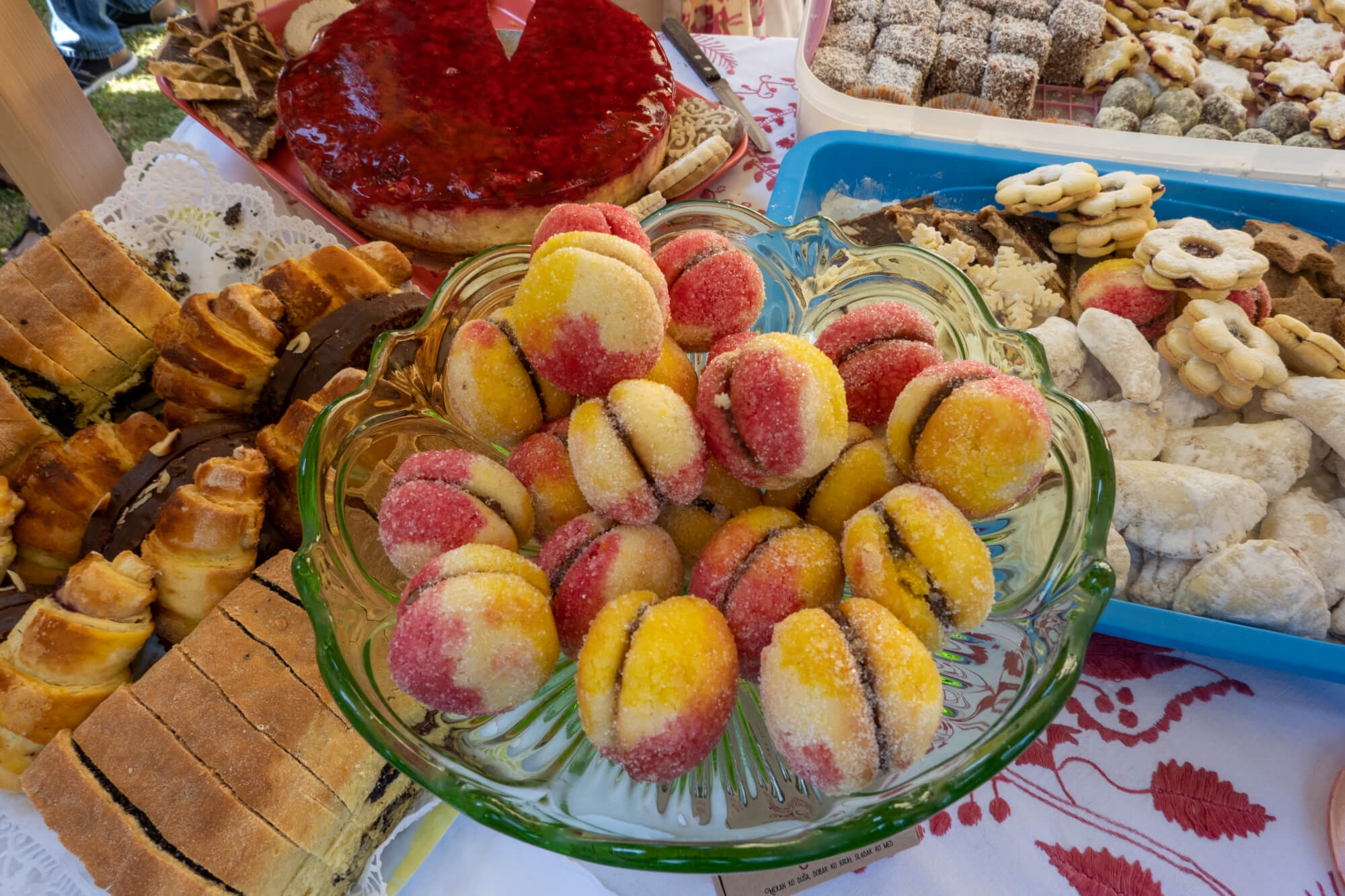 © Ivan Nemet
© Ivan Nemet
This article was produced with the co-operation of Koprivnica-Križevci County Tourist Board. Both the author and Total Croatia News would like to sincerely thank Željko Car, Mato Zeman and Ivan Nemet for the kind permission to use their photography here.
Discover the Beautiful Drava River in Koprivnica Križevci County
October 14, 2021 – From thrilling watersports and cycling, brilliant wine and food festivals to wonderful weekend escapes, the epic Drava river in Koprivnica Križevci County is an endless source of fun and inspiration.
Of the many rivers that run through Croatia, five of them could truly be classed as European giants – they stretch for around 300 kilometres or longer. They are Sava (945km), Drava (749km), Kupa (297km), Mura (483km) and Danube (2860km).
These rivers help define Croatia. They dictate the agriculture, activities and cuisine of the Croatian regions they pass through. Furthermore, they often create the very borders of the country.
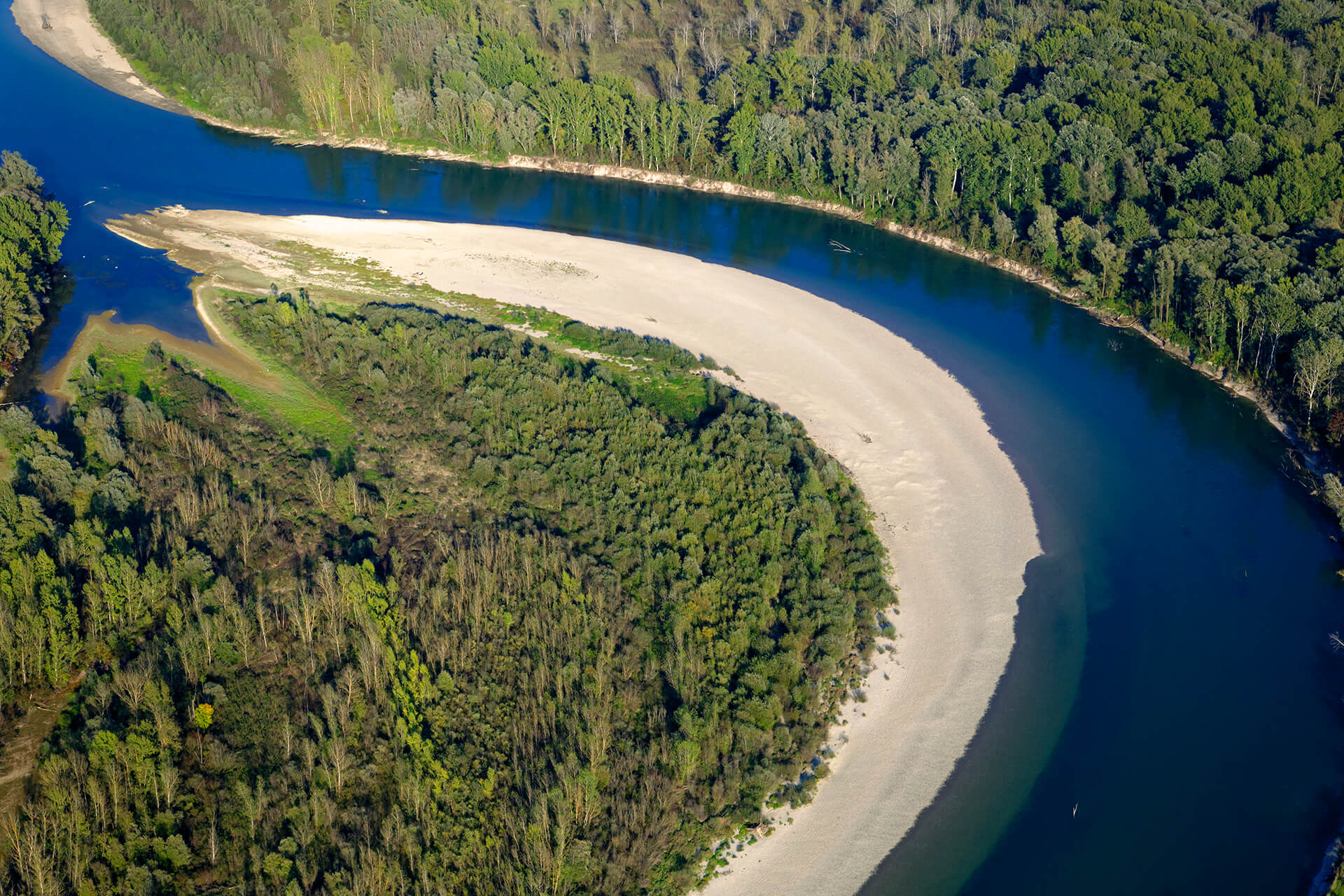 © Goran Šafarek
© Goran Šafarek
Running along the length of the country's most northerly border, the Mur river separates Croatia from Slovenia in the west and Hungary in the east. But, near the Nature Preserve of Veliki Pažut and the historic municipality of Legrad, both in Koprivnica Križevci County, the Mur river gives up its task. Here it flows into the Drava river, becoming its biggest tributary. Thereafter, the Drava continues the job of separating Croatia and Hungary.
The Drava River in Koprivnica Križevci County

By the time the Mur meets the Drava river in Koprivnica Križevci County, the Drava has already travelled more than half of its journey. To get here, it has descended over 1150 metres. Such a long fall has a significant effect on how the river looks and behaves here.
 Traditional wooden fishing boat by the Drava river in Koprivnica Križevci County © Željko Car
Traditional wooden fishing boat by the Drava river in Koprivnica Križevci County © Željko Car
Gone are the violent drops, gushing waterfalls, narrow channels, big boulders and sharp rocks. By now, it has left all that far behind. Instead, the Drava river in Koprivnica Križevci County is an epic, wide expanse of water. On either side, it is bordered by thick, green forests and fields. Its banks are a fine sand, creating beaches on which fishermen and families happily sit all day. This is how the Drava river is here, the perfect natural place for relaxing and recreation.
 Fishermen enjoying summertime on a Drava beach © Mato Zeman
Fishermen enjoying summertime on a Drava beach © Mato Zeman
Recreation, relaxation, activities and unmissable sights on the Drava River in Koprivnica Križevci County
Beaches, birdwatching and boats in Legrad and Veliki Pažut
 From above, part of the Veliki Pažut Special Zoological Reserve at the confluence of the rivers Mur and Drava © Goran Šafarek
From above, part of the Veliki Pažut Special Zoological Reserve at the confluence of the rivers Mur and Drava © Goran Šafarek
Further upstream, people take advantage of the Drava's powerful descent. There, the river is regulated, channelled and harnessed for hydroelectric power. But, where the Drava meets the Mur in Legard, it is wild and unregulated.
 In the mist, the Veliki Pažut Special Zoological Reserve © Goran Šafarek
In the mist, the Veliki Pažut Special Zoological Reserve © Goran Šafarek
This is an ever-changing landscape, right on the border of Međimurje. Here, the rivers are left free to roam. Before 1710, nearby Legrad was actually in Međimurje. But, the Drava changed course and gave Legrad to Podravina. These constantly shifting waterways and floodplains create new habitats and restore existing ones. Subsequently, this is an area of immense biodiversity.
 Two of the colorful residents in the Veliki Pažut Special Zoological Reserve, captured by © Goran Šafarek
Two of the colorful residents in the Veliki Pažut Special Zoological Reserve, captured by © Goran Šafarek
The Veliki Pažut Special Zoological Reserve is 1000 hectares that are specially protected to preserve this biodiversity. Its wetlands and running waters are home to beavers, ducks, coots, waterfowl and reed warblers. In winter, wild geese (spotted goose and hawthorn goose) stay here in large numbers. The deer who wander the surrounding forest are also protected, so long as they stay in Veliki Pažut. You can catch sight of this wildlife and photograph it from the new, specially designated solar-powered boat.

In warmer months, people bring their picnics and barbecues down here to the water's edge. There's a famous beach at the old Legrad-Halasz Csarda resort and nearby a new children's playground.
 Another two residents in the Veliki Pažut Special Zoological Reserve, captured by © Goran Šafarek
Another two residents in the Veliki Pažut Special Zoological Reserve, captured by © Goran Šafarek
You can read more about the visitor offer in Legrad and at the Veliki Pažut Special Zoological Reserve here.
Cycling the Drava river routes
 Cycling by the Drava River in Koprivnica Križevci County © Podravinaprigorjebike.com
Cycling by the Drava River in Koprivnica Križevci County © Podravinaprigorjebike.com
The Drava route is the oldest and most famous bicycle path in Podravina. As its name suggests, it largely follows the course of the Drava river. Although, it veers away from the riverside to take in some of the must-see sights of the county.
 © Podravinaprigorjebike.com
© Podravinaprigorjebike.com
On the 84 kilometre route, you pass through a diverse landscape - fields of golden agriculture, the neat rows of gently descending vineyards and forests that filter the sunlight. From the confluence of the Mura and Drava in Legrad, you drop down past Šoderica lake, before taking in the remarkable village of Hlebine, world-renowned as the centre of an art movement.
 © Podravinaprigorjebike.com
© Podravinaprigorjebike.com
It's not the only historic settlement you meet. The grand city of Koprivnica sits on the route. Its town centre holds several monuments to cycling, so appreciated is the pastime here. Thereafter, traditional rural villages like Podravske Sesvete and Ferdinandovac give a timeless sense of life next to this great river.
Of course, this epic bike path is not the only one in Koprivnica Križevci County (you can see all of the specially designated ones here). Nor is it the only one to pass by the county's special waters.
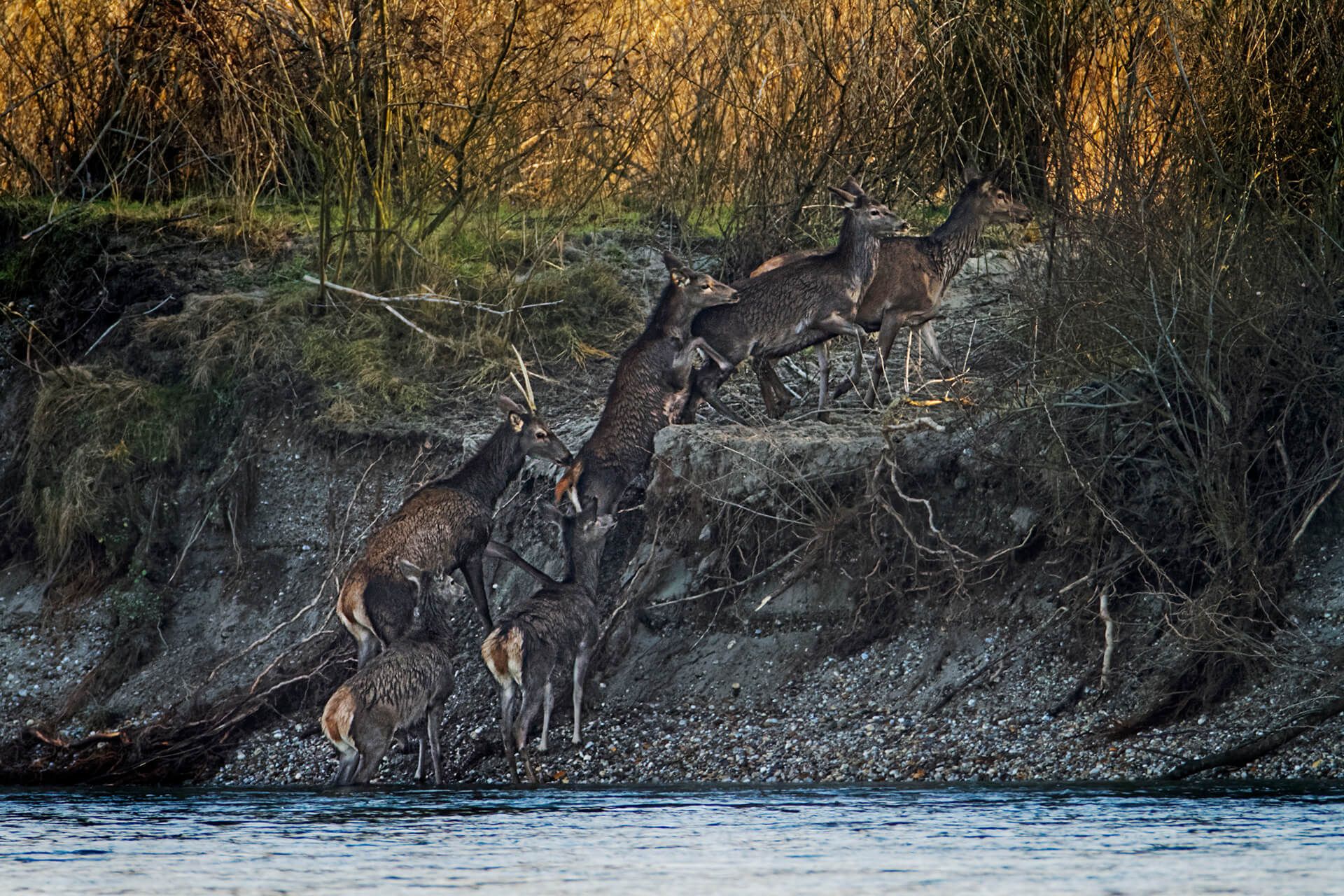 Deer climbing the banks of the Drava, captured by © Goran Šafarek
Deer climbing the banks of the Drava, captured by © Goran Šafarek
At 394 kilometres in length, the D7 bicycle route is incomparable. Starting on the Adriatic sea and ending on Lake Balaton in Hungary, it takes in some of Croatia's greatest water features, including Plitvice Lakes National Park, Lonjsko polje Nature Park and the Drava river in Koprivnica Križevci County. Other highlights it passes in the county are the medieval town of Đurđevac and the village of Gola. From Gola, an alternative bicycle route takes you back along the Drava, then across the river and on to Šoderica lake. The lake is surrounded by new recreational paths perfect for walking, cycling and skating.
Fishing on the Drava river in Koprivnica Križevci County
 In autumn. Fishing on the Drava is enjoyed all year. © Željko Car
In autumn. Fishing on the Drava is enjoyed all year. © Željko Car
Boasting a massive 831,43 hectares of fishing waters, Koprivnica Križevci County is a fisherman's paradise. Carp, catfish, common bream, trout and pike are among the most commonly encountered here. These waters include not only the Drava and the Mura rivers but also more than 20 designated fishing lakes. They're managed by ZŠRK Koprivnica (here), who can also issue permits to any visitors drawn to fish in the spectacular county waters.
 Peaceful seclusion on the Drava © Mato Zeman
Peaceful seclusion on the Drava © Mato Zeman
Camping by the Drava and Šoderica lake
 On a summer day, Šoderica lake © Marc Rowlands
On a summer day, Šoderica lake © Marc Rowlands
Often, the best way to connect with nature is to get up close and stay awhile. Camping by the Drava is great for relaxing and enjoying the surroundings. The Aqua Terra campsite (here) at Šoderica lake is just a couple of hundred metres from the river. There, you're only a few steps from the recreational lake, which is fed underground by the Drava itself.
 Summer fun on the beach at Šoderica lake © Aqua Terra
Summer fun on the beach at Šoderica lake © Aqua Terra
You're not alone on the lakeshore. Since before the 1960s, this has been a favourite place to come. Weekend houses sit back from the shoreline promenade. In warmer months, children's voices carry across the water while they're swimming in Šoderica. In the evenings, young adults congregate at popular bars on the edge of the lake. Music concerts, sports tournaments fill the lake's social calendar.

The camp itself is spread across 20,000 square meters and includes an activities park - with rope bridges through the treetops - and a beach bar. You can find out more about the events and activities on Šoderica lake here.
Hunting in the forests of the Drava
 The river in winter © Mato Zeman
The river in winter © Mato Zeman
The forests that thickly line the banks of the Drava are filled with wildlife. Roe deer, red deer, boar, rabbits and pheasants are just some of the inhabitants. The region's hunters play a vital role in maintaining the habitat of these animals and in keeping track of population numbers. Visitors from several European countries are regularly welcomed to join their activities. Koprivnica-Križevci County Hunting Association can be contacted via local tourist board offices. Alternatively, there are private hunting grounds run by tourism experts KTC (here), who also offer hunting lodge accommodation (here).
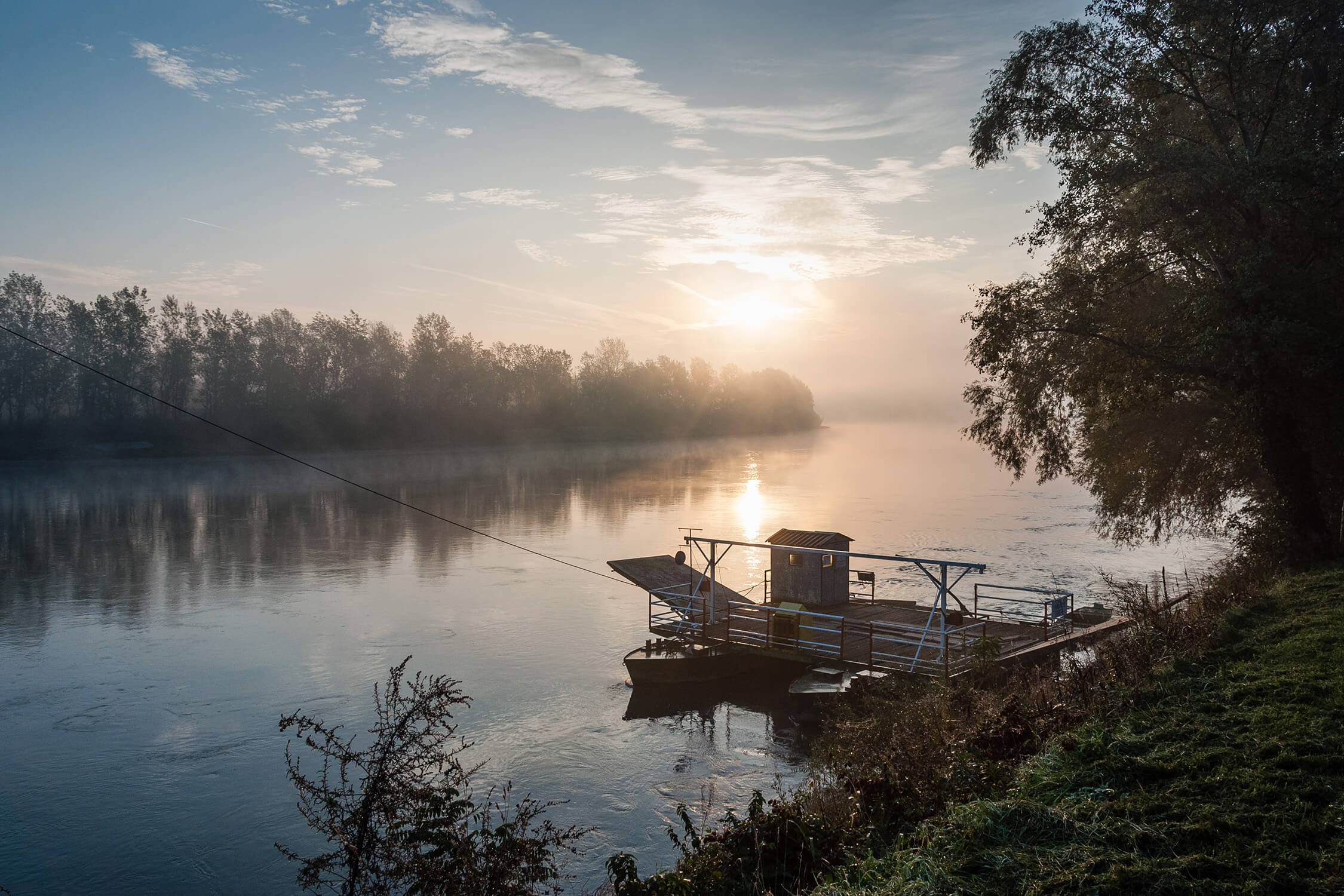 Raft on the Drava © Mato Zeman
Raft on the Drava © Mato Zeman
Wild swimming in Koprivnica Križevci County
 Jumping into the Drava © Mato Zeman
Jumping into the Drava © Mato Zeman
In summer and early autumn, the Drava warms before reaching the county. In some stretches, where the water is deep enough, yet protected from the always strong currents, you can swim in the river. Children jump from rope swings, then plunge into the cooling waters. The river feeds two lakes which are also popular places for summer swimming; Šoderica near Legrad and Đelekovec and the Čingi lingi lake, which lies between the villages of Repaš and Molve.
 From above, Čingi lingi lake © Goran Šafarek
From above, Čingi lingi lake © Goran Šafarek
Rafting, kayaking, canoeing and boat trips on the Drava river
 This giant river is full and wide, even in summer © Željko Car
This giant river is full and wide, even in summer © Željko Car
Many of Croatia's rivers are too dry in summer to support activities. Not the Drava. This giant flows thick and fast even during peak summertime. A great way to enjoy the natural surroundings is from atop the water itself. A whole new perspective of the riverside banks and forests opens up from a canoe or kayak. Gliding silently through the landscape allows it to unfold. For a more thrilling experience, take to the Drava by motorboat or wild rafting.
 Canoeing through an epic landscape © Željko Car
Canoeing through an epic landscape © Željko Car
You can go rafting with Rafting Club Koprivnica (here) or with Etno Kuce Karlovcan (here). Karlovcan also offer motorboat excursions and accommodate larger parties on river tours. You can find out more from the Tourist Board of Dravski Peski (link below).
Food and drink from the Drava river and its fields

At the annual outdoor cook-off Fišijada Ferdinandovac, you could well imagine being further down the Drava in the region of Slavonia. The fried fish and the deep red, paprika-rich fish stews here are classics of Slavonia. And they're favourites here too. The carp and catfish are pulled from the same river, the paprika a long embraced influence from Hungary on the other side.
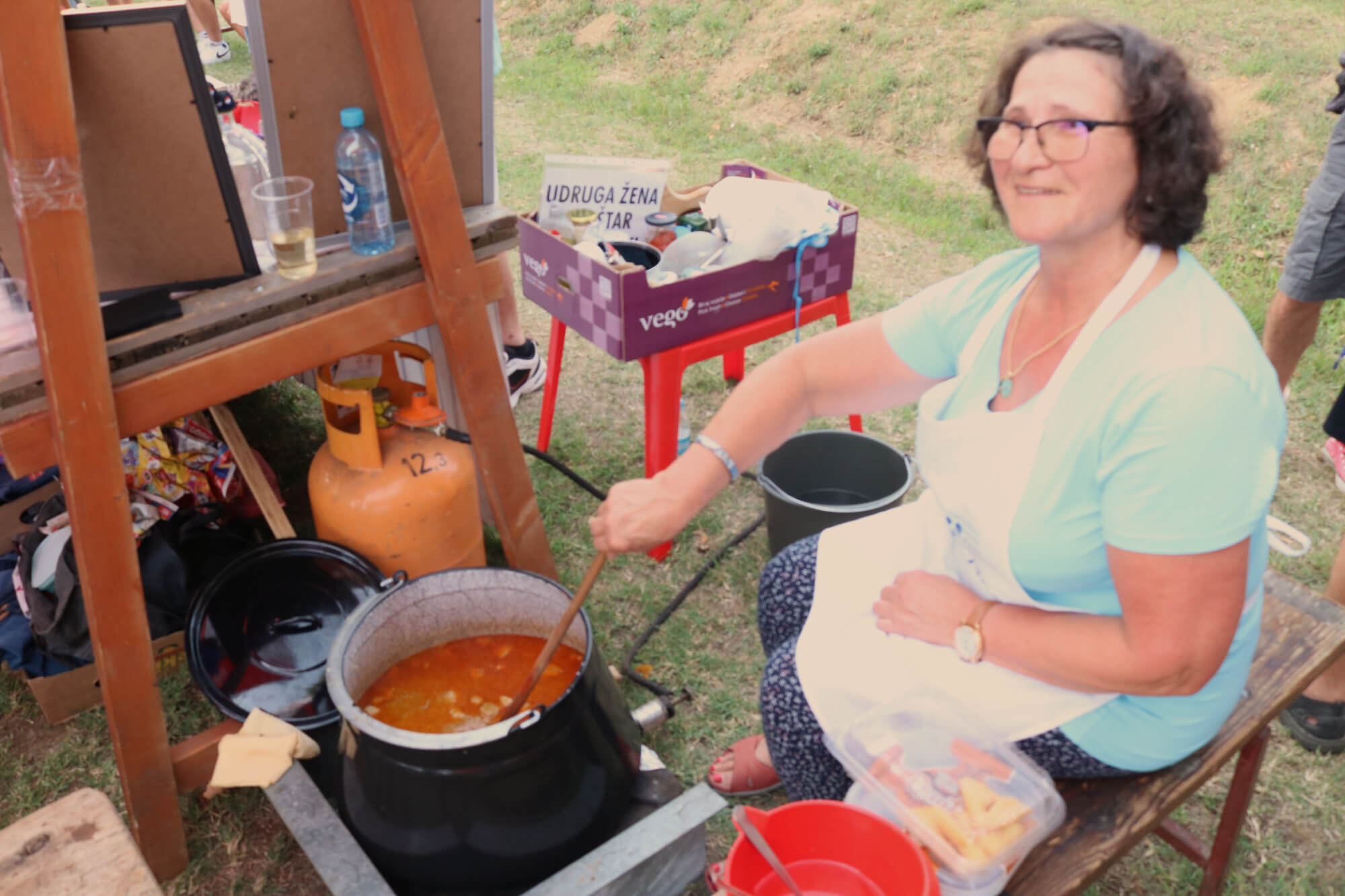 Making gulash in competition at Rokovo in Kozarevac © Marc Rowlands
Making gulash in competition at Rokovo in Kozarevac © Marc Rowlands
But, you'd be wrong to think that Podravina cuisine is an exact match of Slavonia's. Koprivnica-Križevci County has its own distinct recipes, ingredients and flavours. Wild mushrooms, plucked from the forests and fields by the Drava, can be found alongside barley in a classic local soup. It's delicious.
 The all-organic vines of Vinarija Šipek in Kloštar Podravski, Koprivnica-Križevci County © Marc Rowlands
The all-organic vines of Vinarija Šipek in Kloštar Podravski, Koprivnica-Križevci County © Marc Rowlands
Koprivnica-Križevci County also has exemplary wines. You'll find superb whites like Riesling, Chardonnay, Grasevina, Sauvignon blanc and more here. They thrive in sandy soil. It has been deposited in the fields here over millennia by the Drava. Vinarija Šipek in Kloštar Podravski (here) run an all-organic winery with excellent wines and heritage grapes. Vinarija Kostanjevec in Lukovec (here) are decorated internationally. In 2020, their Premium Riesling won Silver at the Decanter World Wine Awards. But, there are many more great winemakers all across the county.
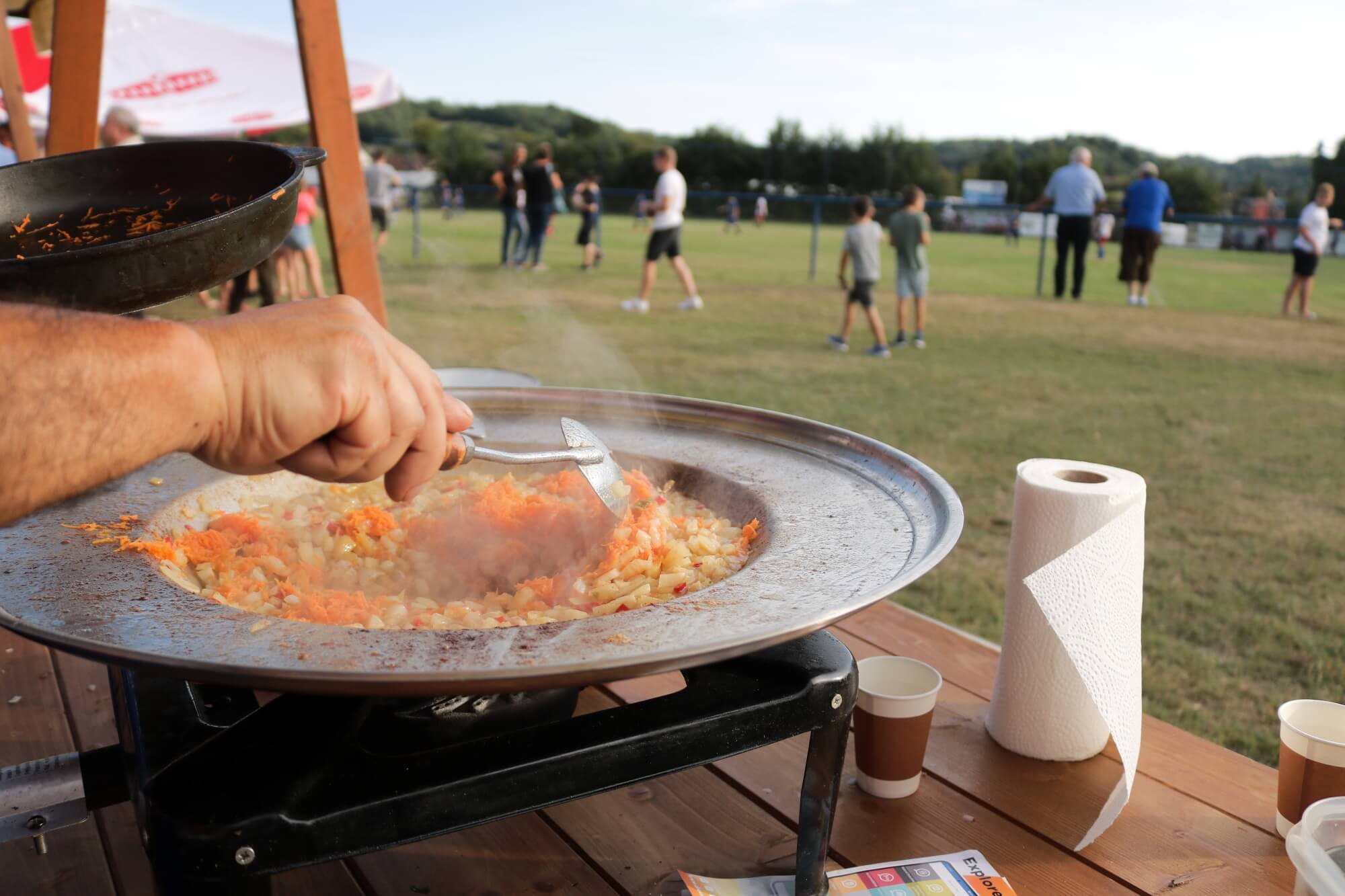
In this part of Podravina, celebrating the fine local food and drink is a regular part of the culture. Every village has at least one notable event. Often held outdoors, they are great social occasions and a good excuse to visit a neighbouring place. More often than not, a sports match, music concert or a funfair runs in tandem. If you want to try the river fish dishes of Podravina, restaurant Ribička hiža near Đurđevac (here) serves these specialities year-round.

Staying by the Drava river
 From above, Dravski raj on the Drava River in Koprivnica Križevci County © Toni Fereža/FT STUDIO
From above, Dravski raj on the Drava River in Koprivnica Križevci County © Toni Fereža/FT STUDIO
You can find great traditional accommodation across all of Koprivnica-Križevci County. And, if you want to stay right next to the Drava, there are some super options.

Dravski raj (here) is a delightful renovated farm complex that backs onto the Drava. Inside traditional buildings, you'll find modern bedrooms, a games room, hot tub and free bicycles for exploring the surrounding nature. You can draw your own water from the well to drink – or just take it from the tap, of course.
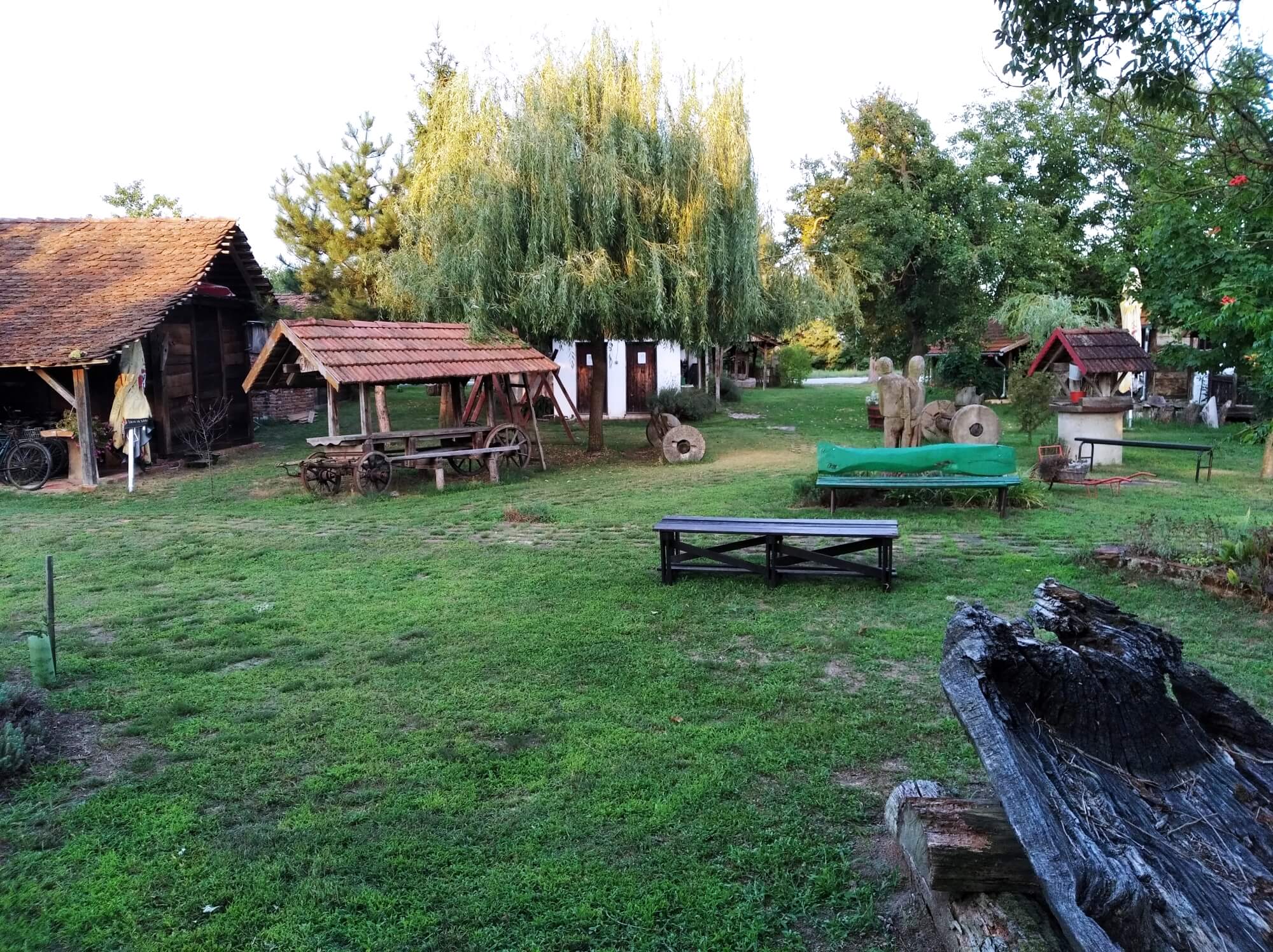 Perfect for events and relaxing, the sprawling grounds of Etno kuce Karlovcan © Marc Rowlands
Perfect for events and relaxing, the sprawling grounds of Etno kuce Karlovcan © Marc Rowlands
Etno kuce Karlovcan (here) is a large plot containing artefacts of regional agriculture and life from the last few hundred years. Longstanding stakeholders in tourism on the Drava, they offer food, accommodation, boat rides, rafting and horse riding too.
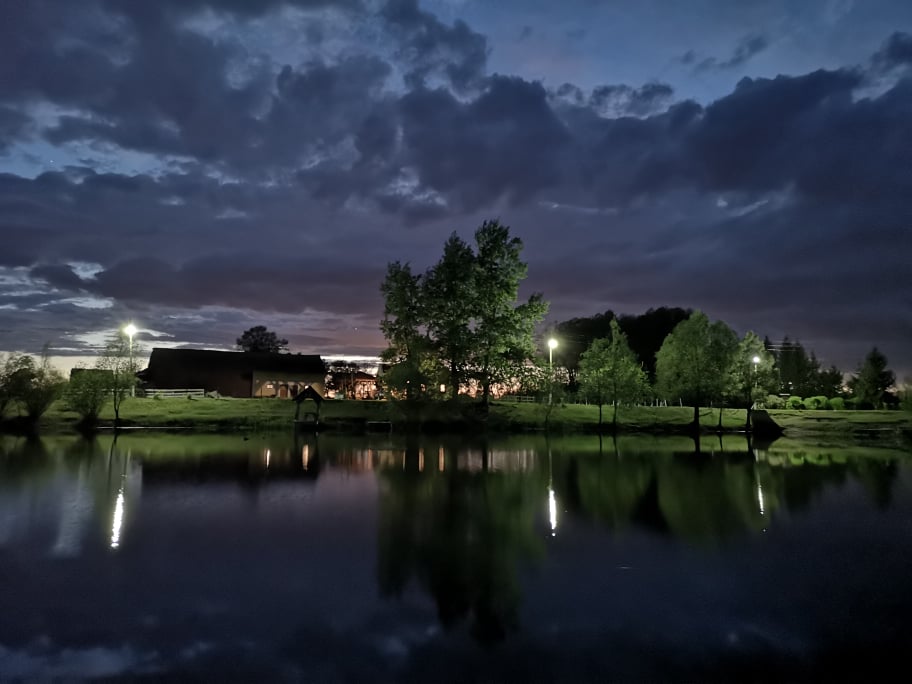 From the water, Country House Ivančan © Domagoj Krznarić
From the water, Country House Ivančan © Domagoj Krznarić
Art centar Ješkovo have robinson accommodation near Ješkovo. Also, Country House Ivančan (here) is perfect for a riverside getaway. The family enterprise is also famed for the food they prepare.
This article was produced with the co-operation of Koprivnica-Križevci County Tourist Board. Both the author and Total Croatia News would like to sincerely thank Željko Car, Mato Zeman and Goran Šafarek for the kind permission to use their photography here.
If you would like more information about any of the mentioned events, activities or county cycle routes, you can contact Koprivnica-Križevci County's tourist boards on these links.
Koprivnica town tourist board here
Križevci tourist board here
Đurđevac tourist board here
Central Podravina tourist board here
Tourist board of Dravski Peski here
Kalnik tourist board here
PHOTOS: Colour, Cuisine and Art of Koprivnica at Motifs of Podravina
September 28, 2021 – 27-year-old Motifs of Podravina Festival showcases all the region's unique art, cuisine and culture, including fantastic wines, music, dance, folklore, food, arts & crafts plus a huge outdoor exhibition of Croatian Naive Art. We preview the 2021 Autumn edition in pictures...
 © Puhački orkestar Grada Koprivnice
© Puhački orkestar Grada Koprivnice
 © Mato Zeman
© Mato Zeman
 © Mato Zeman
© Mato Zeman
The city centre streets and parks of Koprivnica will once again explode with colour, cuisine, music, dance and art this weekend for the 28th Motifs of Podravina Festival. The much-loved event showcases all of the unique aspects of culture from the region.
 © Turistička Zajednica Koprivnica
© Turistička Zajednica Koprivnica
 © Turistička Zajednica Koprivnica
© Turistička Zajednica Koprivnica
Usually taking place in summer, the 2020 event was postponed by the pandemic and instead held in autumn. With very surprising results. Numbers of visitors to the event increased dramatically. As a result, another autumn edition of Motifs of Podravina will take place on Saturday 2 October and Sunday 3 October 2021.
 © Turistička Zajednica Koprivnica
© Turistička Zajednica Koprivnica
 © Turistička Zajednica Koprivnica
© Turistička Zajednica Koprivnica
 © Turistička Zajednica Koprivnica
© Turistička Zajednica Koprivnica
A run-up to the event is already underway at some of Koprivnica Križevci County's most famous museums. There are special exhibitions currently on show at Koprivnica Gallery, the Gallery of Naive Art in Hlebine and the Mijo Kovačić Gallery in Koprivnica. All these participating museums will open their doors to the public for free this weekend.
 © Damir Spehar/PIXSEL
© Damir Spehar/PIXSEL
 © Turistička Zajednica Koprivnica
© Turistička Zajednica Koprivnica
The celebrated works of the region's famous artists will be joined by an explosion of colour through Koprivnica City Park. There, one of the largest outdoor exhibitions of art in Croatia takes place. Over 50 Croatian Naive Artists will be displayed through the park and on Zrinski Square. As such, this is one of the best times and places to come and learn more about Croatian Naive Art and the very famous branch of it that comes from this region - the Hlebine School (you can read more about it here).
 © Mato Zeman
© Mato Zeman
 © Turistička Zajednica Koprivnica
© Turistička Zajednica Koprivnica
 © Turistička Zajednica Koprivnica
© Turistička Zajednica Koprivnica
Stalls displaying Hlebine school paintings and other art of the region will be interspersed with others offering arts & crafts, traditional produce and tasty treats.
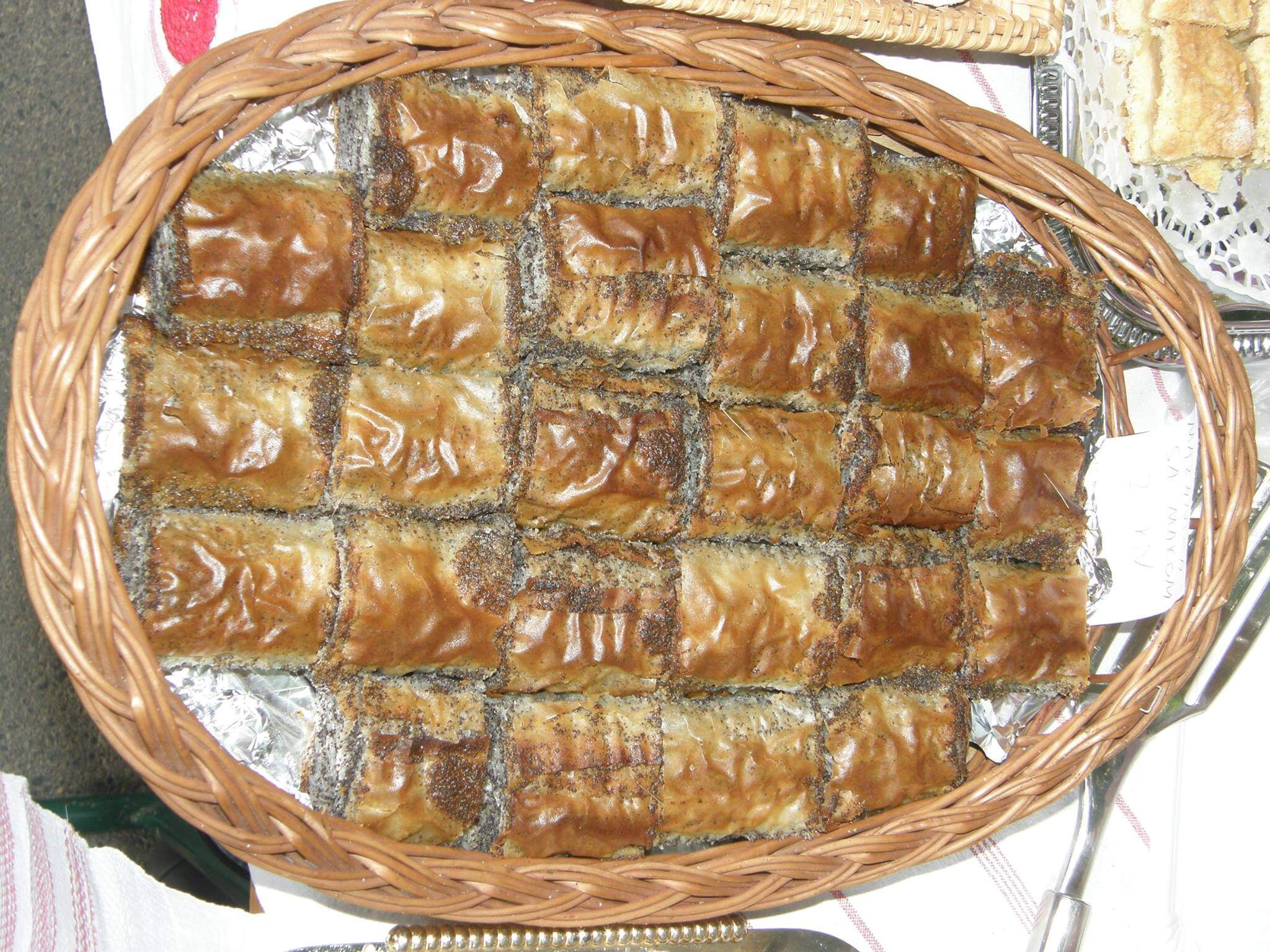 © Turistička Zajednica Koprivnica
© Turistička Zajednica Koprivnica
 © Mato Zeman
© Mato Zeman
 © Turistička Zajednica Koprivnica
© Turistička Zajednica Koprivnica
 © Mato Zeman
© Mato Zeman
Holding the event in autumn allows Motifs of Podravina to take advantage of harvest time. Colourful pumpkins and squash might well be seen. The surrounding countryside is rich with wild mushrooms. Famously, they are collected to make a local specialty soup. And, the county's famous corn is ripe and ready, as are the chestnuts. So, too, the brilliant, new season wines of Koprivnica Križevci County. This year, some of the best local wines will be joined by guests from Hungary and presented by Koprivnica City Museum.
 Vineyards of Koprivnica-Križevci County © Marc Rowlands
Vineyards of Koprivnica-Križevci County © Marc Rowlands

Adding to the colour with a distinctly local flavour, music, folklore and dance are offered by Folklore Ensemble Koprivnica, the International Children's Folklore Societies Meeting and KUD Rudar Glogovac. Additional music comes from Koprivnica City Puhački Orkestar, folk-rock band Ogenj and singer Eric Vidovic.
 © Folklore Ensemble Koprivnica
© Folklore Ensemble Koprivnica
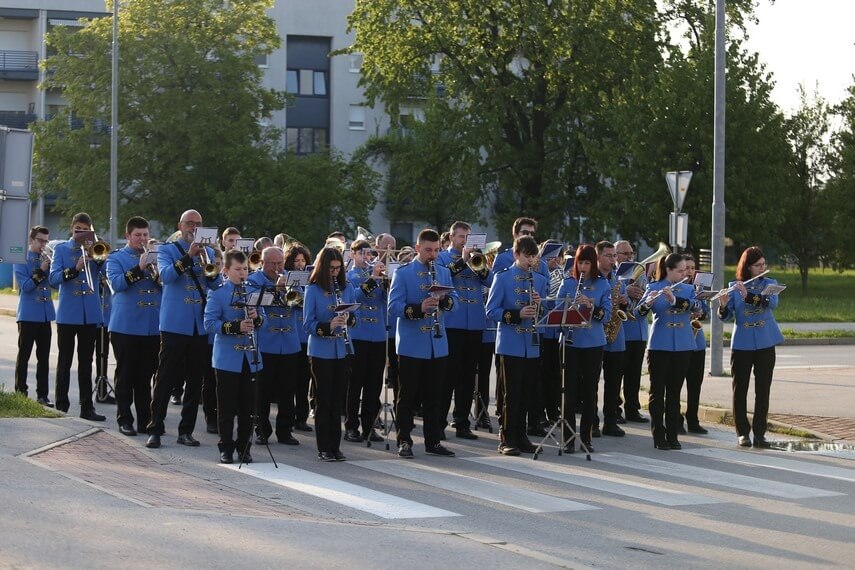 © Turistička Zajednica Koprivnica
© Turistička Zajednica Koprivnica
 © Turistička Zajednica Koprivnica
© Turistička Zajednica Koprivnica
 © Folklore Ensemble Koprivnica
© Folklore Ensemble Koprivnica
Entrance to Motifs of Podravina Festival. Photographic preview of the event made possible with the kind assistance of Turistička Zajednica Koprivnica here and photographer Mato Zeman.

 Photos of celebrity and local guests at previous editions of Motifs of Podravina, captured by © Mato Zeman
Photos of celebrity and local guests at previous editions of Motifs of Podravina, captured by © Mato Zeman
World's Best Naive Art: Authentically Croatian Hlebine School
September 1, 2021 – We visit Podravina to discover the incredible Hlebine School of Croatian Naive Art
Croatia is sometimes difficult to find. Of course, with modern GPS and Croatia's nine international airports, getting here is no problem. But just where are you when you arrive?
Looking down at your dinner, the plate may hold a dish recognisable across the Mediterranean. Above your head, the architecture could be Roman, Austro-Hungarian or modern, indistinguishable. Ottoman influence lies everywhere from the best-loved handheld snacks to the mountain of slippers in every dwelling's doorway.
 A friendly local wears the folk costume of the small region surrounding Koprivnički Ivanec, near Koprivnica. The costume features the incredibly intricate Ivanečki vez embroidery, which has been safeguarded locally for over 90 years and is now a protected part of Croatia's cultural heritage. Photo © Marc Rowlands.
A friendly local wears the folk costume of the small region surrounding Koprivnički Ivanec, near Koprivnica. The costume features the incredibly intricate Ivanečki vez embroidery, which has been safeguarded locally for over 90 years and is now a protected part of Croatia's cultural heritage. Photo © Marc Rowlands.
Actually, the true essence of the country you'll find in the Croatians themselves. And yet, their history is all too often obscured by the impositions of empires that once were here. However, we can find this history away from the major cities, the centres of influence. We find it in the villages. Specifically, in their folk costume, their folk song and folk dance. And we find it in the art there.
What is Naive Art?
 Cows In The Woods by Ivan Generalić, hanging at the Galerija naivne umjetnosti (Gallery of Naive Art), Hlebine © Koprivnica Town Museum
Cows In The Woods by Ivan Generalić, hanging at the Galerija naivne umjetnosti (Gallery of Naive Art), Hlebine © Koprivnica Town Museum
Naive art is any art made by someone who has received no formal or classical training. In this sense, the earliest discovered art of humans – cave paintings – are naïve art. However, there is nothing the classical art world likes more than specifically defining art movements. And, to them, the modern era of European Naive Art begins in the late 19th Century, with a growing appreciation of painters like French Post-Impressionist Henri Rousseau (1844–1910).
Because of the lack of formal, classical or academic training, it is said that common characteristics exist within the work of many Naive Artists. Specifically, these characteristics stem from an ignorance of strict perspective. Naive Artists often do not mute colours or lessen detail with distance. Also, they often don't attempt to accurately decrease the size of objects at distance.
Croatian culture as a part of national identity
 Horned horse by Ivan Generalić, hanging at the Galerija naivne umjetnosti (Gallery of Naive Art), Hlebine © Koprivnica Town Museum
Horned horse by Ivan Generalić, hanging at the Galerija naivne umjetnosti (Gallery of Naive Art), Hlebine © Koprivnica Town Museum
Croatian Naive Art is one of the best recognised and best-loved in the world. In truth, Croatia's movement doesn't begin to emerge until well into the 20th Century. Although, it is important to view the country's Naive Art within its broader search for a Croatian national identity. The roots of this movement stem back over 100 years prior to the emergence of Croatian Naive Art, beginning with the foundation of the Illyrian movement, Matica Hrvatska and more.
This older movement of national awakening had strong preoccupations with language, written text and cultural identity. Actually, its instigators were very much the educated intelligentsia of cities like Zagreb.
 'A Battered Rooster' by Ivan Generalić, hanging at the Galerija naivne umjetnosti (Gallery of Naive Art), Hlebine © Koprivnica Town Museum
'A Battered Rooster' by Ivan Generalić, hanging at the Galerija naivne umjetnosti (Gallery of Naive Art), Hlebine © Koprivnica Town Museum
Before the end of World War I, Russia had undergone two revolutions. After the war, the German, Austro-Hungarian and Ottoman empires collapsed. Much of Europe was plunged into over half a decade of political upheaval - revolts, unrest and strikes by workers. Mostly socialist in sentiment - organised by workers and disillusioned former soldiers – this unrest and the accompanying birth of new nations lay not in the hands of the inner-city intelligentsia. And, many believed the cultural and artistic expression which reflected this new era should also come from the proletariat.
Krsto Hegedušić and the Earth Group (Grupa Zemlja)
 Krsto Hegedušić 'poklade' © Muzej moderne i suvremene umjetnosti Rijeka (MMSU)
Krsto Hegedušić 'poklade' © Muzej moderne i suvremene umjetnosti Rijeka (MMSU)
One Croat who believed strongly in this was painter Krsto Hegedušić. He co-founded the Earth Group in 1929 during a challenging period for Croatia. Europe was still reaping the dire economic repercussions of the First World War. Croatia had finally been freed of Austro-Hungarian hegemony, only to be forced into existing within another monarchy.
The founding beliefs of the Earth Group were that authentic artistic expression should be a product of the time and space whence it came and should be free of foreign influence. Art should not be created for the sake of art, but to depict an actual reality.
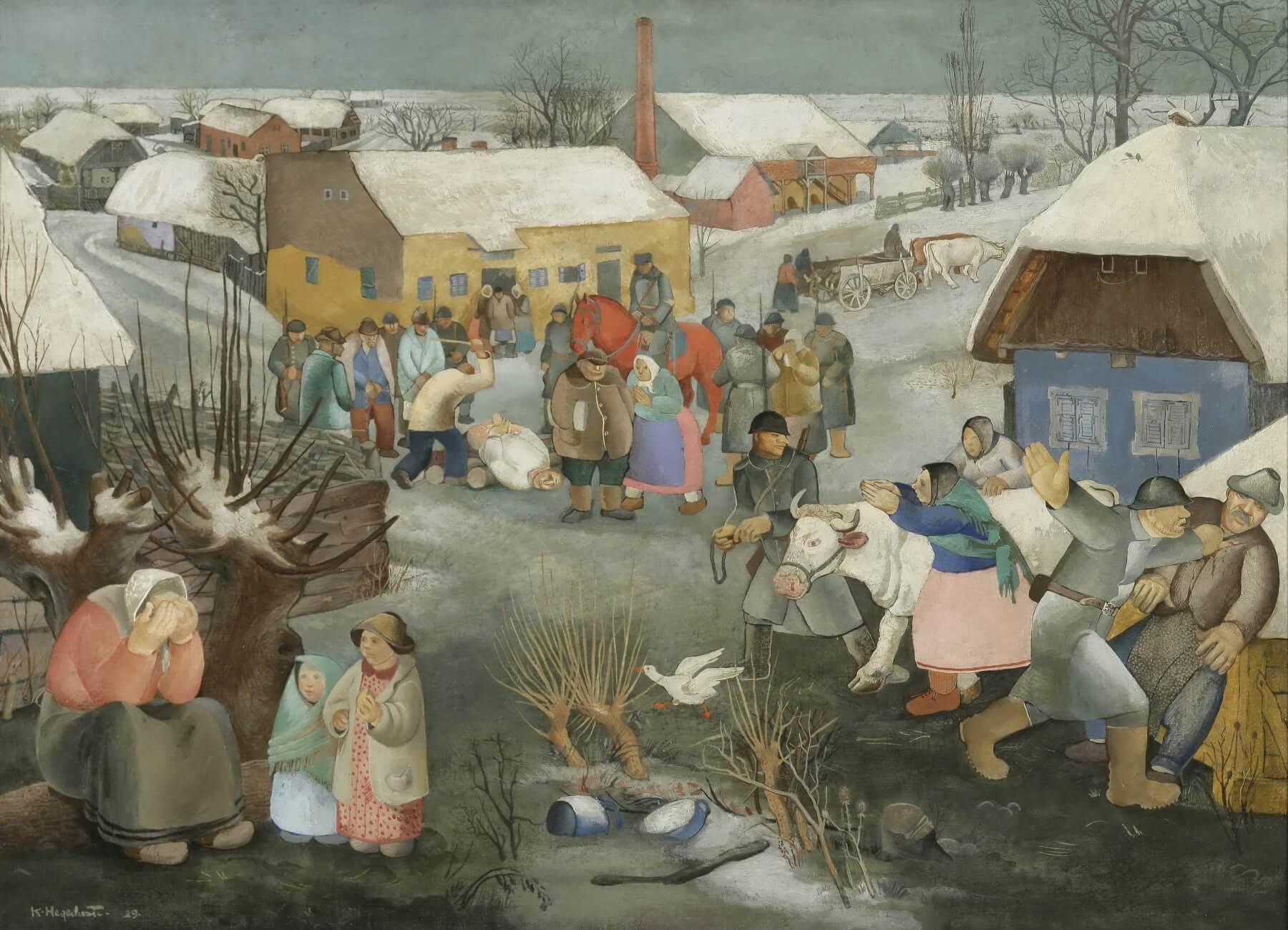 Krsto Hegedušić 'Rekvizicija (Requisition)', 1929 © Museum of Modern and Contemporary Art, Rijeka
Krsto Hegedušić 'Rekvizicija (Requisition)', 1929 © Museum of Modern and Contemporary Art, Rijeka
Krsto Hegedušić himself was very much a product of his studies. In 1920 he enrolled in what is today the Academy of Fine Arts in Zagreb. After graduating, he spent an additional two years on a scholarship in Paris. And yet, as a painter, his subject matter often reflected the world around him. Social critiques, within his work he depicted everyday poverty and the exploitation of Croatian peasants.
 'Football match' by another of the Earth Group's founding members, Ivan Tabaković, 1927 © Gallery of Matica srpska, Novi Sad
'Football match' by another of the Earth Group's founding members, Ivan Tabaković, 1927 © Gallery of Matica srpska, Novi Sad
Born in Petrinja, Krsto Hegedušić spent summer holidays in the idyllic countryside and agricultural land surrounding his father's birth village of Hlebine, Podravina. When he was aged just 8 years old, Krsto's father died. Subsequently, the family moved to Hlebine. Later, Krsto would spend time living in Zagreb, not least for the duration of his studies. But, just one year into the life of the Earth Group, Krsto Hegedušić discovered a teenage artist back in Hlebine.
Hlebine School First Generation: Ivan Generalić, Franjo Mraz and Mirko Virius
 Self-portrait by Ivan Generalić, hanging at the Galerija naivne umjetnosti (Gallery of Naive Art), Hlebine. Photo © Koprivnica Town Museum
Self-portrait by Ivan Generalić, hanging at the Galerija naivne umjetnosti (Gallery of Naive Art), Hlebine. Photo © Koprivnica Town Museum
When we speak of the Hlebine School within Croatian Naive Art we are not actually talking about a building, an institution of learning. After all, the very definition of a Naive Artist is they are not classically trained. Instead, the Hlebine School is a discipline. And, more so than any Croatian Naive Art that followed, it is quite easy to define.
 'Kanas' by Ivan Generalić, hanging at the Galerija naivne umjetnosti (Gallery of Naive Art), Hlebine © Koprivnica Town Museum
'Kanas' by Ivan Generalić, hanging at the Galerija naivne umjetnosti (Gallery of Naive Art), Hlebine © Koprivnica Town Museum
Within its first generation, the three most prominent artists are Ivan Generalić, Franjo Mraz and Mirko Virius. Both Ivan Generalić and Franjo Mraz were born, lived and were discovered by Krsto Hegedušić in the village of Hlebine. Mirko Virius was from Đelekovec, less than 15 kilometres to their north-west.
 'Ples v goricaj' by Ivan Generalić, hanging at the Galerija naivne umjetnosti (Gallery of Naive Art), Hlebine © Koprivnica Town Museum
'Ples v goricaj' by Ivan Generalić, hanging at the Galerija naivne umjetnosti (Gallery of Naive Art), Hlebine © Koprivnica Town Museum
Key to identifying the Hlebine School in its First Generation is the subject matter. All three of these artists painted the world around them – their neighbours and peers, living everyday lives, in the villages, landscape and towns of today's Koprivnica-Križevci County. Certainly, Krsto Hegedušić helped inspire this subject matter, moulding the artists to suit the ethos of the Earth Group.

Ivan Generalić was just 16 years old when discovered by Krsto Hegedušić in 1930. The meeting would have a fast and long-lasting impact on Generalić. Ivan's humble early canvasses were the brown paper bags used in the business of a close relative. Yet, within a year of meeting Hegedušić, Ivan Generalić found his work being exhibited in Zagreb.

Hegedušić's shaping of the artists didn't obliterate their existing perspectives as much as it simply shifted them. For instance, Hegedušić's advice might have been "Instead of painting the church, why not paint people walking to the church in the snow?" or "Instead of marking the religious holiday by painting its origin story, why not show how you and your neighbours celebrate this holiday?"
Whether Hegedušić was conscious of doing it, or whether the artists were willfully lead, this guidance ultimately had the effect of politicising their work. In turn, this would lead the most authentic of all Croatian art into dangerous times when fascists took over the country. Proletarian in their themes, the Hlebine School and the Earth Group became viewed as Communist. The latter group was banned and Hegedušić arrested several times. During the Second World War, Mirko Virius was arrested, taken to a concentration camp in Zemun and executed. Ivan Generalić's painting of the sorrowful incident, 'The Death of Virius', is among his most famous. Franjo Mraz was also arrested during World War II but managed to escape.
 'Mask' by Ivan Generalić, hanging at the Galerija naivne umjetnosti (Gallery of Naive Art), Hlebine © Koprivnica Town Museum
'Mask' by Ivan Generalić, hanging at the Galerija naivne umjetnosti (Gallery of Naive Art), Hlebine © Koprivnica Town Museum
Aside from informing the subject matter of their work, Hegedušić also educated the painters in different techniques. One of these techniques – painting on glass – would become an enduring component of the Hlebine School and Croatian Naive Art.
Painting on glass
 'Eiffel Tower' by Ivan Generalić. The original hangs at Galerija naivne umjetnosti (Gallery of Naive Art), Hlebine © Koprivnica Town Museum
'Eiffel Tower' by Ivan Generalić. The original hangs at Galerija naivne umjetnosti (Gallery of Naive Art), Hlebine © Koprivnica Town Museum
Copying the style from imported religious art, when Hlebine School artists learned to paint on glass, it gave their efforts several distinct qualities. Firstly, if stored in the right conditions – away from damaging light – the glass protects the colours of the paint. As a result, much Hlebine School art is as brilliantly vivid today as the day it was first painted.
Secondly, this format makes the works heavy and fragile. Several masterpieces have been lost by falling to the floor and smashing.
Thirdly, painting on glass is time-consuming and challenging. Each painting must be thought out and planned in advance. The painter initially makes a sketch or preliminary painting as a guide. The image is then transferred to glass effectively in reverse. Details in the forefront of the painting must be applied first, with the background painted on top. Throughout the process, the artist will continuously check their progress on the opposite side of the glass.
Hlebine School Second Generation and onwards: Josip Generalić, Ivan Večenaj, Ivan Lacković, Mijo Kovačić, Franjo Filipović, Dragan Gaži
 Rooster on Sunflower by Ivan Večenaj © Galerija Ivan Večenaj
Rooster on Sunflower by Ivan Večenaj © Galerija Ivan Večenaj
Perhaps to their surprise, the painters of Hlebine School first generation became a big hit. Exhibitions of their work were appreciated first in Zagreb. But, then the exhibitions began to tour across Yugoslavia and eventually the art capitals of the world. This attention would help inspire a new generation of artists from Hlebine and the surrounding area.
 'Lončari' by Mijo Kovačić at Galerija Mijo Kovačić © Koprivnica Town Museum
'Lončari' by Mijo Kovačić at Galerija Mijo Kovačić © Koprivnica Town Museum
Success for the Hlebine School artists showed that Croatian art and self-expression were valid and valued even if unstudied. Thereafter, the tiny village of Hlebine would never look the same. More and more Naive Artists and folk artists were inspired to create. Still to this day, many continue.
While some Hlebine School artists carried on the tradition of painting on glass, others were inspired to sculpt in wood or, like Mirko Virius, paint on canvas. One of the key distinctions between later generations of the Hlebine School and the first is the subject matter.
 Podravina bread sellers in a picture hanging at Galerija Mijo Kovačić © Koprivnica Town Museum
Podravina bread sellers in a picture hanging at Galerija Mijo Kovačić © Koprivnica Town Museum
Second and then third generation Hlebine School artists were inspired to paint folklore, fantasy, from imagination, and with symbolic uses of vivid colur. This broadening of the style was partially the influence of Dimitrije Bašičević Mangelos, the first curator of the Gallery of Primitive Art in Zagreb (today Croatian Museum of Naïve Art). Subsequently, many of these later works would not fit within the paradigms of the Earth Group.
 'Žabe (Frogs)' by Ivan Večenaj © Galerija Ivan Večenaj
'Žabe (Frogs)' by Ivan Večenaj © Galerija Ivan Večenaj
For example, some of Ivan Večenaj's sacral paintings clearly come from the author's imagination and not his actual vision. Similarly, Josip Generalić, son of Ivan, travelled far beyond the limits of his home village in pursuit of his socio-political subject matter. Both artists were concerned with environmental issues on a global, not just a local level. Although, their work is still inextricably linked to their locale; Večenaj works the Podravina rooster emblem into many of his paintings and even depicts Christ within a Podravina landscape. So too does Josip Generalić when he paints The Beatles and others from the 60s counterculture movement.
On the Trail of the Hlebine School in Podravina & Prigorje, Home of the Treasures of Croatian Naive Art
 Locals return from mushroom picking in autumnal Podravina in a picture hanging at Galerija Mijo Kovačić © Koprivnica Town Museum
Locals return from mushroom picking in autumnal Podravina in a picture hanging at Galerija Mijo Kovačić © Koprivnica Town Museum
Some Croatian Naive Art is held in private and public collections across the world. Some of it finds a home in the National Museum of Naive Art in Zagreb. However, the vast majority of treasures from the Hlebine School of Croatian Naive Art remain in Podravina & Prigorje. The national Museum of Naive Art in Zagreb is currently closed as it undergoes the lengthy process of changing address. As a result, the following addresses in Koprivnica-Križevci County are currently the best places to see the most authentically Croatian of all the country's art.
Also, because the landscape of Hlebine, Koprivnica and wider Podravina appears in so much Hlebine School art, you genuinely need to come here to view both together. You'll get a much better understanding and appreciation of this art when you see it in its natural surroundings.
Galerija Mijo Kovačić, Koprivnica Town Museum, Koprivnica
 Koprivnica Town Museum © Koprivnica Town Museum
Koprivnica Town Museum © Koprivnica Town Museum
Born 5 August 1935 in Gornja Šuma, Molve, Podravina, Mijo Kovačić is one of the last remaining Croatian Naive Artists of the Hlebine School's second generation. He still paints today, albeit not quite as prolifically as in the past. He has produced such a body of work that not only can you find him exhibited in Croatian Museum of Naïve Art in Zagreb, but also in dedicated Mijo Kovačić galleries in Zagreb and Koprivnica. The one is run by Koprivnica Town Museum, which you can see above. Find out more about the gallery here.
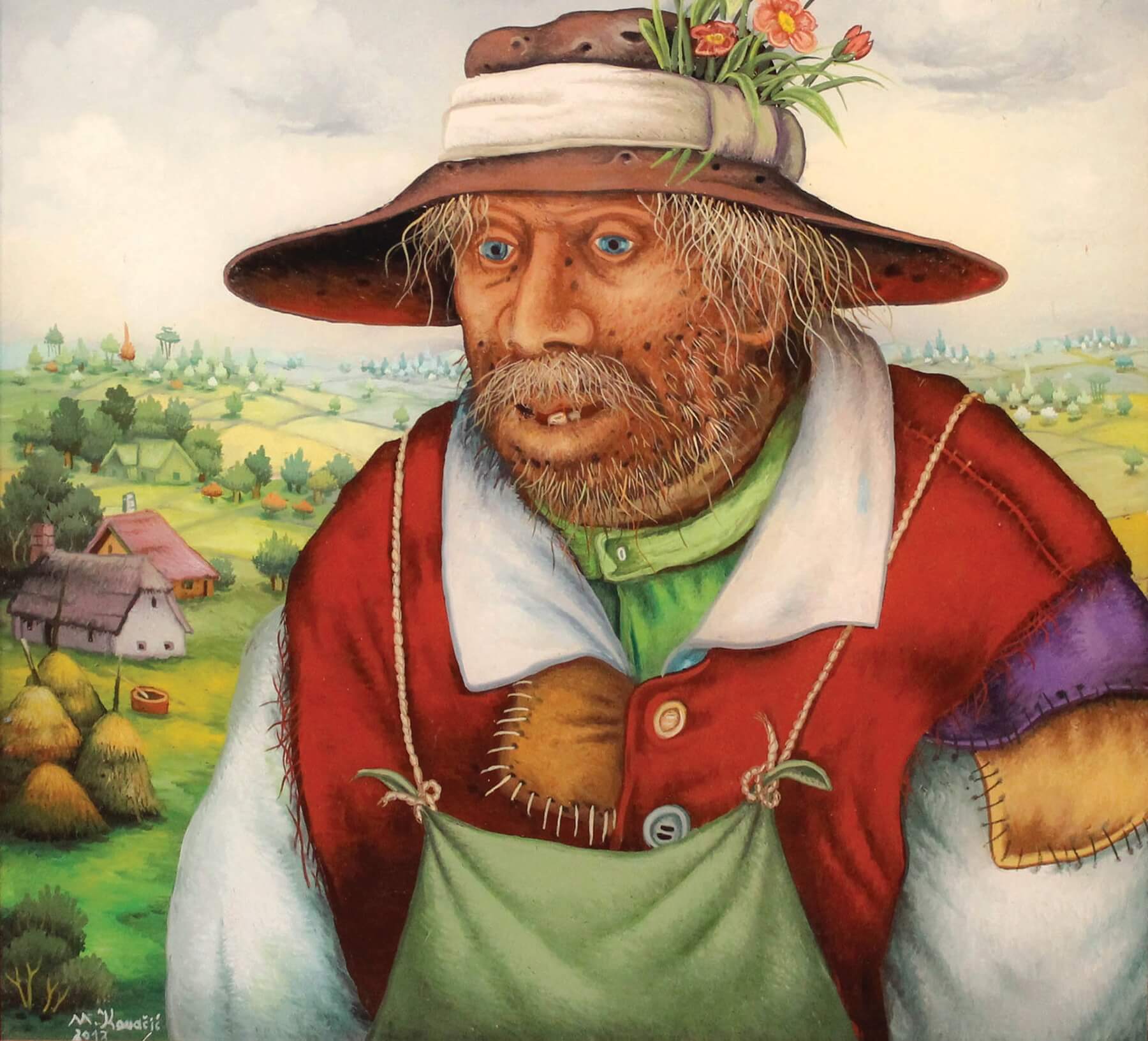 'Portrait' hanging at Galerija Mijo Kovačić © Koprivnica Town Museum
'Portrait' hanging at Galerija Mijo Kovačić © Koprivnica Town Museum
Galerija naivne umjetnosti (Gallery of Naive Art), Hlebine

Founded in 1968, the Gallery of Naive Art in Hlebine is one of the top two most important galleries for Naïve Art in Croatia, the other being the Croatian Museum of Naïve Art in Zagreb. But, unlike their Zagreb counterpart, this gallery concentrates specifically on the Hlebine School and locally produced art. A crowd of sculpted wooden figures greets you on the front lawn. Inside, beneath the wooden beams of a beautiful building designed specifically for this purpose, some of the best artists and paintings of the Hlebine School.

In the mid-1980s, when he was the most famous of all Croatian Naive Artists, neighbour Ivan Generalić paid the gallery a visit. He offered to pay for an extension to the gallery, on condition that it be used to house a permanent exhibition of his work. It was a win-win for the museum and Ivan Generalić subsequently donated some of his true masterpieces for the collection.

The newer part of the gallery is so true to the original design that, unless informed, you'd never guess it was built later. You'll find works by every key member of the Hlebine School here, including Ivan Generalić, Franjo Mraz and Mirko Virius, Josip Generalić, Ivan Večenaj, Ivan Lacković, Mijo Kovačić, Franjo Filipović and Dragan Gaži. Today, the museum is run by Koprivnica Town Museum. Find out more about the gallery here.
Galerija Josip Generalić, Hlebine
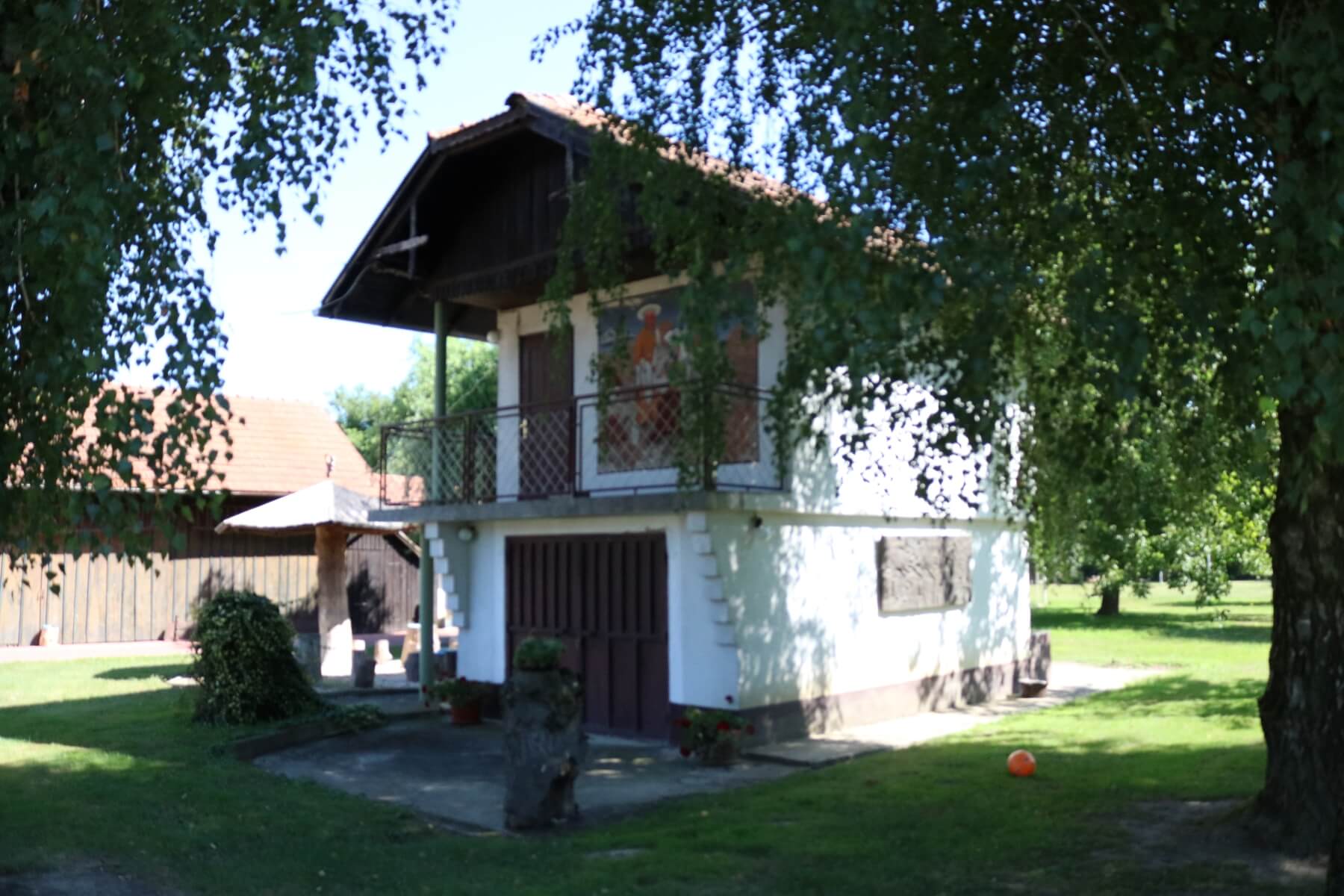
“How long have you got?” asks Ivan Generalić, grandson of Josip Generalić, great-grandson of Ivan Generalić, as he greets you at the Galerija Josip Generalić, Hlebine. He's asking if there's time for the1 hour tour or 6-hour tour. We think he's joking. He's not.
Generalić family have lived here for at least five generations. Having two of the Hlebine School's most famous and most successful painters within their ranks has allowed them to expand their property portfolio. It's just as well, because there's a lot to see here. What was once the simple, semi-agricultural farmstead where Ivan's great grandfather was born is now a sprawling family estate that houses an ethno-museum and considerable gallery spaces filled with incredible exhibits. All of the original furniture from how his great grandfather lived is preserved, displayed as it was, only in an adjoining property the family now own. Alongside the history and many works of Ivan Generalić and Josip Generalić, folk art, sculpture and artisan furniture made by incredible craftsmen from across the Balkans, who the painters once traded with.
 Luda Jaga by Josip Generalić, hanging at the Galerija naivne umjetnosti (Gallery of Naive Art), Hlebine © Koprivnica Town Museum
Luda Jaga by Josip Generalić, hanging at the Galerija naivne umjetnosti (Gallery of Naive Art), Hlebine © Koprivnica Town Museum
If you already like this kind of art, you might have to pinch yourself more than once that you're being shown around by someone called Ivan Generalić. Ivan himself is not only knowledgeable but extremely engaging - there are several big laughs on the tour. Ivan points out one image of an unloved neighbour, who grandfather Josip sent to the moon. He provides him with a Podravina cow so at least he can survive. Perhaps feeling slightly guilty, in the next room, Josip has painted the neighbour's return to earth. Although, he lands nearby in the famously barren Đurđevac desert (sometimes known as the Croatian Sahara). That's quite a lot of time and paint spent on someone you don't like!
Ivan's great grandfather also had a sense of humour. Having grown tired of friends bragging about their holidays in summer houses on the Croatian coast (which he did not like), at the height of his fame he decided to build his own. He invited several friends to accompany him on his holiday. And proceeded to take them to his own back garden, just metres from his main residence, where he had built the summer house. Genuinely, you'll wish you had time for the 6-hour tour. Find out more about the gallery here.
Galerija Ivan Večenaj, Gola

Some of the work by artists from the first and second generation of the Hlebine School are scattered far and wide. But, with the canon of Ivan Večenaj, it's a different story. Truly breathtaking examples of his finest work – definitely among the very best – were reserved by the artist for his family collection. Included in the collection, most of his key sacral works, including Golgotha, a triptych of the life of Jesus, crucifixion and the Four Horsemen of the Apocalypse. Don't worry, it's not all doom and gloom. Beautiful and bright images of Podravina roosters, agriculture and a charming portrait of his wife hang alongside. You can view them all at Večenaj's former home, now Galerija Ivan Večenaj in Gola. Across the road, an ethnic museum preserves life how it once was here. A truly unmissable highlight on the trail of Croatian Naive Art. Find out more about the gallery here.
 'Pevec na obedu' © Galerija Ivan Večenaj
'Pevec na obedu' © Galerija Ivan Večenaj
Galerija Ivan Lacković, Batinske

Clearly something of a local patriot, Ivan Lacković donated some 300 works to the village of his birth. Within the collection, you'll find not only works by Lacković himself but also sculptures by Naive Artists Ljubica Marulec and the painter's brother, M. Lacković. Find out more about the gallery here.

Podravina Motifs (Podravski motivi)
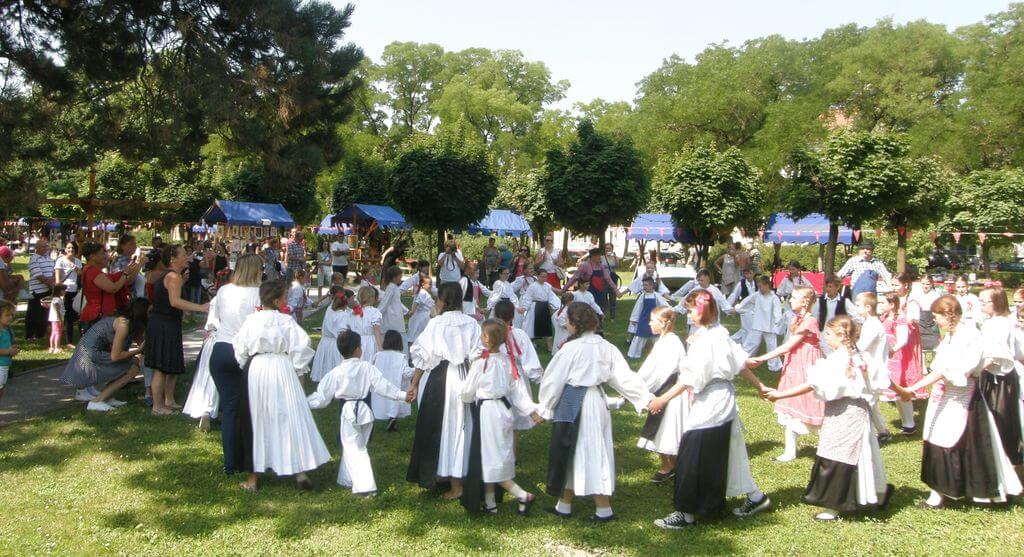 Podravina Motifs (Podravski motivi). Photo © Grad Koprivnica
Podravina Motifs (Podravski motivi). Photo © Grad Koprivnica
A three-decade-old Koprivnica event that showcases all of the cuisine, culture, music, dance, costume and art of Podravina. Naive Art is a key and central theme to the event. Usually, there are over 50 contemporary Naive Artists from the region exhibited, with their work on sale. Taking place each summer, it's a great place to get to know traditional Podravina and to pick up some amazing gifts. Find out more about the event here.
Šetnja kroz naivu u Hlebinama (Walk Through The Naive of Hlebine)
 Outside Galerija Josip Generalić during Šetnja kroz naivu u Hlebinama © Tourist Board Central Podravina
Outside Galerija Josip Generalić during Šetnja kroz naivu u Hlebinama © Tourist Board Central Podravina
An annual open-air gallery of Hlebine Naive Art taking place on the streets of the village itself. Organised by Tihomir Želimorski who has the rural accommodation offer Stari zanati in Hlebine, Šetnja kroz naivu u Hlebinama differs from Podravina Motifs because it focusses exclusively on art – painting and sculpture. The houses in Hlebine are treasure troves of Croatian Naive Art. During this summertime event, all village residents bring their paintings and statues out onto the streets, hang them on trees or in gardens. You're invited to walk around the delightful village to look. Find out more about the event here.
This article was produced with the kind help of Koprivnica-Križevci County Tourist Board and checked for accuracy by Koprivnica Town Museum.
If you want to find out the latest from Podravina, be sure to check TCN pages here.
Koprivnica-Križevci Crisis Management Team Suspends Vaccination With AstraZeneca Vaccine
ZAGREB, 16 March, 2021 - The Koprivnica-Križevci County's COVID-19 crisis management team on Tuesday decided to suspend mass vaccination with AstraZeneca shots against COVID-19, which was set for Wednesday, 17 March, until the European Medicines Agency (EMA) decides on the matter at its meeting on 18 March.
The mass inoculation was to have been held in a hall in Sveti Petar Orehovec for the residents of that town as well as for residents of Gornja Reka and Kalnik.
However, in the meantime it has been decided to wait for the EMA's decision.
To date, 6,363 residents of this county in north Croatia have been inoculated against coronavirus with Pfizer, Moderna and AstraZeneca vaccines, and 1,961 have received both doses of the two-dose vaccine. There have been no reports of any serious side-effects.
The people who get vaccinated with vaccines registered in Croatia and the EU will have protection from getting seriously sick, which could eventually result in death, the team said.
For more about vaccatinations in Croatia, follow TCN's dedicated page.
Croatia Pan Europe Trains Will Run 160 Kilometres Per Hour By 2030
November 2, 2020 – From southern Spain to Budapest through Rijeka and Zagreb and from Salzburg through Zagreb, Belgrade and Skopje to Greece, Croatia pan Europe trains will run 160 kilometres per hour by 2030
In the biggest investment ever made in the infrastructure of the country's rail network, Croatia pan Europe trains will run 160 kilometres Per Hour By 2030. In an investment costing 4.5 billion Euros, 750 kilometres of railways will be modernised. © HZPP
© HZPP
The lines that will receive the upgrade will connect Rijeka to Budapest in Hungary via Zagreb (RH2) and Zagreb to Belgrade via Vinkovci (RH1). Though these lines already exist, they have never undergone an overhaul of the scale proposed. The modernisation with ensure double lanes across the whole of both routes and facilitate passenger train speeds of 160 kilometres per hour.
The level of investment means that during the next ten years, HŽ Infrastruktura's (Croatian Railway Infrastructure Company) rebuild of the Croatia pan Europe trains network will be the largest infrastructure project in the Republic of Croatia and the largest beneficiary of EU grants in the transport sector. Most of the money for the modernisation is coming from European Union grants. Almeria on the Mediterranean, in Andalusia, southern Spain, where the Mediterranean Corridor begins © ddz photo
Almeria on the Mediterranean, in Andalusia, southern Spain, where the Mediterranean Corridor begins © ddz photo
The RH2 line is part of the Mediterranean Corridor which connects the south of the Iberian peninsula with eastern Hungary via six countries. The line runs from Almeria on the Mediterranean coast in the south-east of Spain, through Madrid and Barcelona. It passes through Marseille in France, then northern Italy, Slovenia, Croatia, the Hungarian capital of Budapest, before finishing in Záhony in the east of Hungary, not far from the border with Ukraine. The route covers more than 6000 kilometres. The Croatian section will pass through Jurdani (six kilometres north of Opatija), Rijeka, Karlovac, Zagreb, Dugo Selo, Križevci and Koprivnica. To Croatian rail passengers, the Spanish city of Barcelona will be just a few hours away by 2030 © Patrice Audet
To Croatian rail passengers, the Spanish city of Barcelona will be just a few hours away by 2030 © Patrice Audet
The RH1 line is part of the Pan-European Corridor X. The Croatia pan Europe trains section of this transport route was once one of the three lines taken by the Orient Express. The modernised rail line will start in Salzburg, Austria and pass through Ljubljana before reaching Zagreb. The line will pass through Slavonski Brod and Vinkovci before making its way to Belgrade, then Niš in southern Serbia. The old Oriental Express line then headed east, to Istanbul via Sofia, Bulgaria. The EU-funded train section of the Pan-European Corridor X instead heads south, to Thessaloniki in Greece via Skopje in Macedonia. The rail journey time between Zagreb and Belgrade (pictured) will be shortened considerably by the improvements © Djordje Jovanovic
The rail journey time between Zagreb and Belgrade (pictured) will be shortened considerably by the improvements © Djordje Jovanovic
Trains are currently the greenest transport option for long-distance travel. As the world heads in the direction of seeking energy sources that do not rely on finite fossil fuels, rail also currently looks to be the long-distance travel option best-equipped to meet this challenge. In the future, visitors from all across Europe may increasingly rely on the Croatia pan European trains network in order to access the country. The improvements also increase business and leisure opportunities for Croatians in Europe. Thessaloniki in Greece is one of the most popular cities in Europe for visitors. The renewed rail section of the Pan European Corridor X will end here © Dimitris Vetsikas
Thessaloniki in Greece is one of the most popular cities in Europe for visitors. The renewed rail section of the Pan European Corridor X will end here © Dimitris Vetsikas
Around 935 million Euros was invested in the Croatian railway infrastructure between 2010 and 2019. The new investment dwarfs those figures. The initial investment, occurring between 2020 and 2024 amounts to as much as 1.8 billion Euros, of which almost 78.7 per cent is co-financed by the European Structural and Investment Funds (ESI) and the Connecting Europe Facility (CEF). From 2025 to 2030, EU funds totalling more than 2.7 billion Euros are expected to be invested in the Croatia pan European trains network.
Freight train passage along the lines will also be increased, reaching a new speed of 120 kilometres per hour. The Croatia pan European trains network also offers great potential to open up continental Croatia regions to international visitors. The Croatian railway network currently has 2,617 kilometres of track, of which 274 kilometres are double-track and 980 are electrified.
For the latest travel info, bookmark our main travel info article, which is updated daily.
Read the Croatian Travel Update in your language - now available in 24 languages
Continental Croatia Trains: Inland Opens Up With Green Travel
October 3, 2020 - With charter airlines in a state of flux and Croatia Railways beginning a renewal of their fleet in Slavonia, are continental Croatia trains the eco-friendly and best way to unlock the inland's amazing potential?
Everything changes. Nothing stays the same. Even before 2020 arrived, lifestyles and trends were headed in new directions. Eco-tourism and agro-tourism were two of the fastest-growing areas within the travel sector, this behaviour change a response to concerns about the environment. And nowhere in the country stands better poised to take advantage of this interest than continental Croatia. Impossibly pretty Zagorje - the region lies just north of Zagreb and is accessible by continental Croatia trains © Ivo Biocina / Croatia National Tourist Board
Impossibly pretty Zagorje - the region lies just north of Zagreb and is accessible by continental Croatia trains © Ivo Biocina / Croatia National Tourist Board
From the impossibly pretty hills of Zagorje, the peaceful rivers of Karlovac county and the hidden vineyards that surround the capital Zagreb to the vast Pannonian flatlands that stretch to Slavonia, Baranya, Vukovar-Srijem and beyond, the varied topography of continental Croatia is wild, exciting and - by many - wholly undiscovered.
This is land where agriculture and nature thrive side by side, where the stresses of modern-day existence ebb away as you readjust to a way of life that would look mostly familiar to the people who lived here centuries ago. These are places where you can truly be at one with yourself and with your surroundings. In continental Croatia, you often find yourself in an environment that is both timeless and traditional, yet wholly contemporary in regards to its ecological aspirations. And you're never far away from an exciting city environment that you can dip into on a whim – not just Zagreb, but Osijek, Slavonski Brod, Karlovac, Sisak and Varaždin too.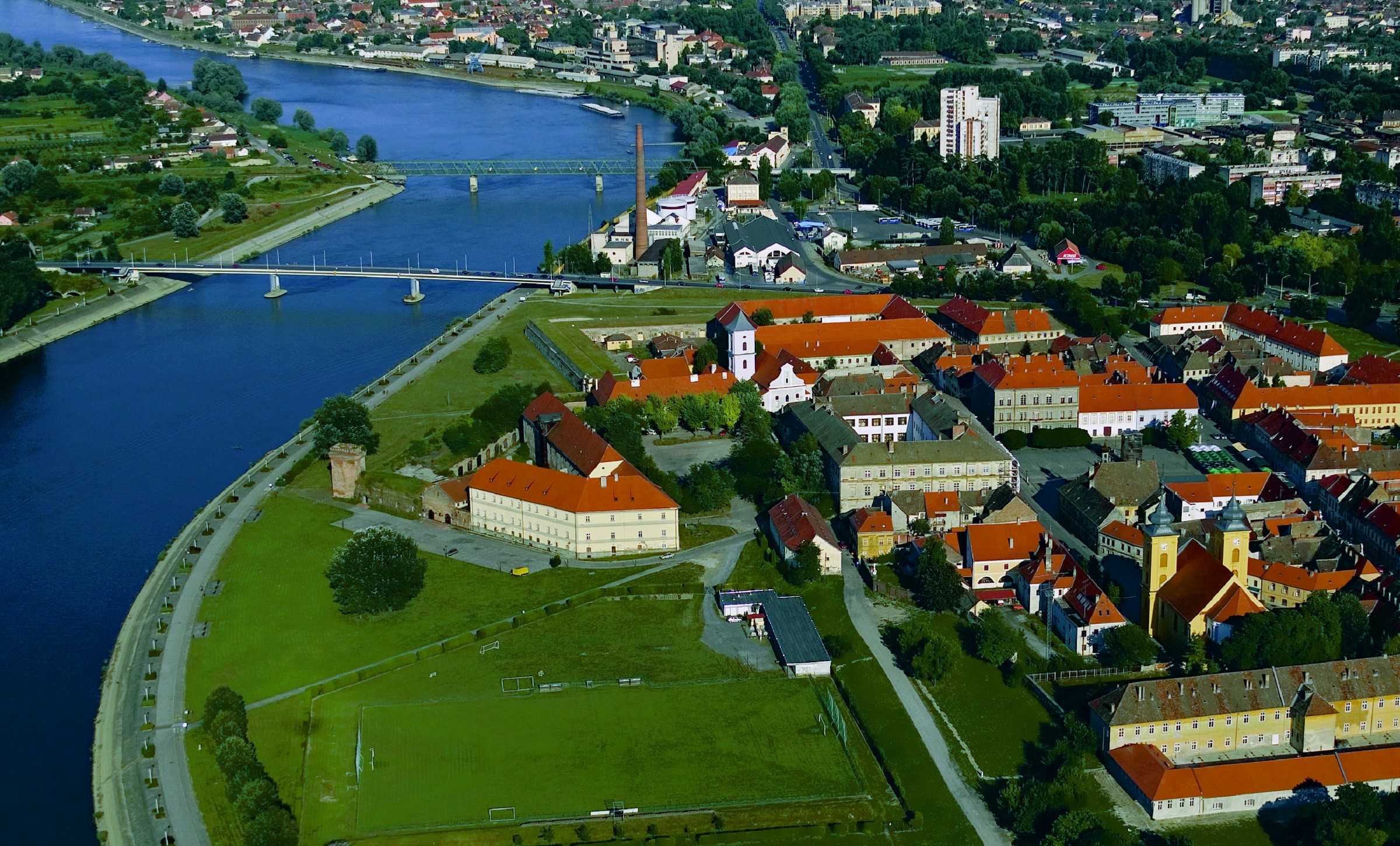 To those who really know and love Croatia, Osijek is simply unmissable. It is both the capital of and the doorway to Slavonia and Baranya and should be more accessible by continental Croatia trains. Sadly, international transportation links to the city by air are also quite poor. Improvements in accessibility to Slavonia and Baranya by rail and road are imminent © Romulić & Stojčić
To those who really know and love Croatia, Osijek is simply unmissable. It is both the capital of and the doorway to Slavonia and Baranya and should be more accessible by continental Croatia trains. Sadly, international transportation links to the city by air are also quite poor. Improvements in accessibility to Slavonia and Baranya by rail and road are imminent © Romulić & Stojčić
Unlocking the incredible potential of continental Croatia relies on getting the message out there and facilitating travel to these regions
In recent TCN features we have detailed that motorways within Croatia are among the best in Europe - once you're inside Croatia, travelling by car (or bus) between the regions couldn't be easier. We have also seen evidence of the huge interest in travelling here by rail and using continental Croatia trains.
Of all the modern methods of long-distance travel, rail is by far the most eco-friendly. What better way to begin an environmentally friendly holiday than by arriving on continental Croatia trains? When the country wisely decided to prioritise its internal motorway system, a modern and fast inter-regional rail network was put on the back burner. Nowhere suffers greater from this decision than continental Croatia. The Croatian rail network © Croatian Official Document uploaded to Wikipedia by Epepe
The Croatian rail network © Croatian Official Document uploaded to Wikipedia by Epepe
The only high-speed line that currently exists in Croatia links Rijeka to Budapest, via Zagreb and Koprivnica. Planned improvements hope to cut journey times between Zagreb and its nearest coastal city to an hour. Same as it ever was - Rijeka was the first Croatian city to be connected internationally by rail. That line also ran into the heart of Austro-Hungary and facilitated upper-class travel to places like Opatija. But does it best benefit the country to invest in more links to the coast or in continental Croatia trains? Well, the inland is not being ignored. Upgrades are being made to continental Croatia trains.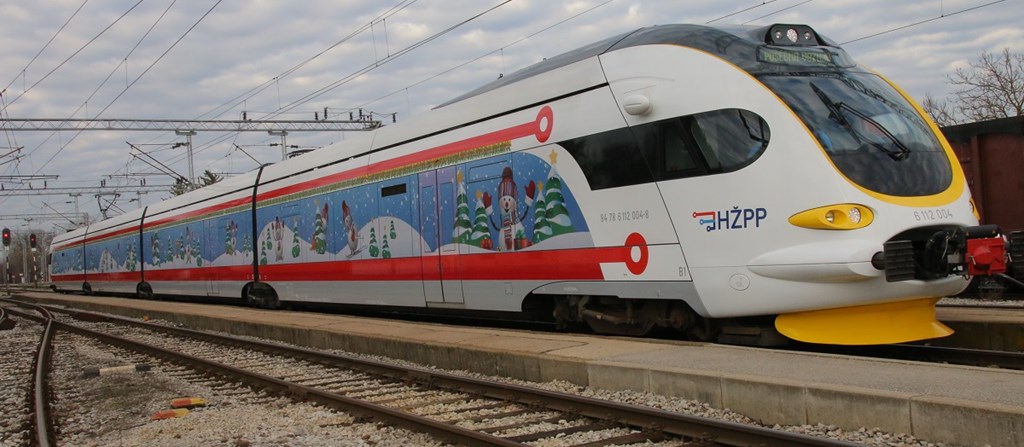 This impressive beast actually services the country's coast. But would more investment in the continental Croatia trains network better service more people and help unlock the inland to tourists? Around 70% of the country's inhabitants live in continental Croatia © HŽPP
This impressive beast actually services the country's coast. But would more investment in the continental Croatia trains network better service more people and help unlock the inland to tourists? Around 70% of the country's inhabitants live in continental Croatia © HŽPP
The rail link between Zagreb and Slavonski Brod is so historic that it was once part of the four routes of the Orient Express. It has been maintained to a standard where you can make a relatively quick journey from the capital to Vinkovci via Slavonski Brod. The same cannot be said for rail travel to Osijek, the access point to Baranya and much more. So slow is the connection between Osijek and Zagreb that it has been possible over recent times to reach the Slavonian capital quicker by taking the train to Vinkovci, then the bus to Osijek, rather than travelling direct by rail.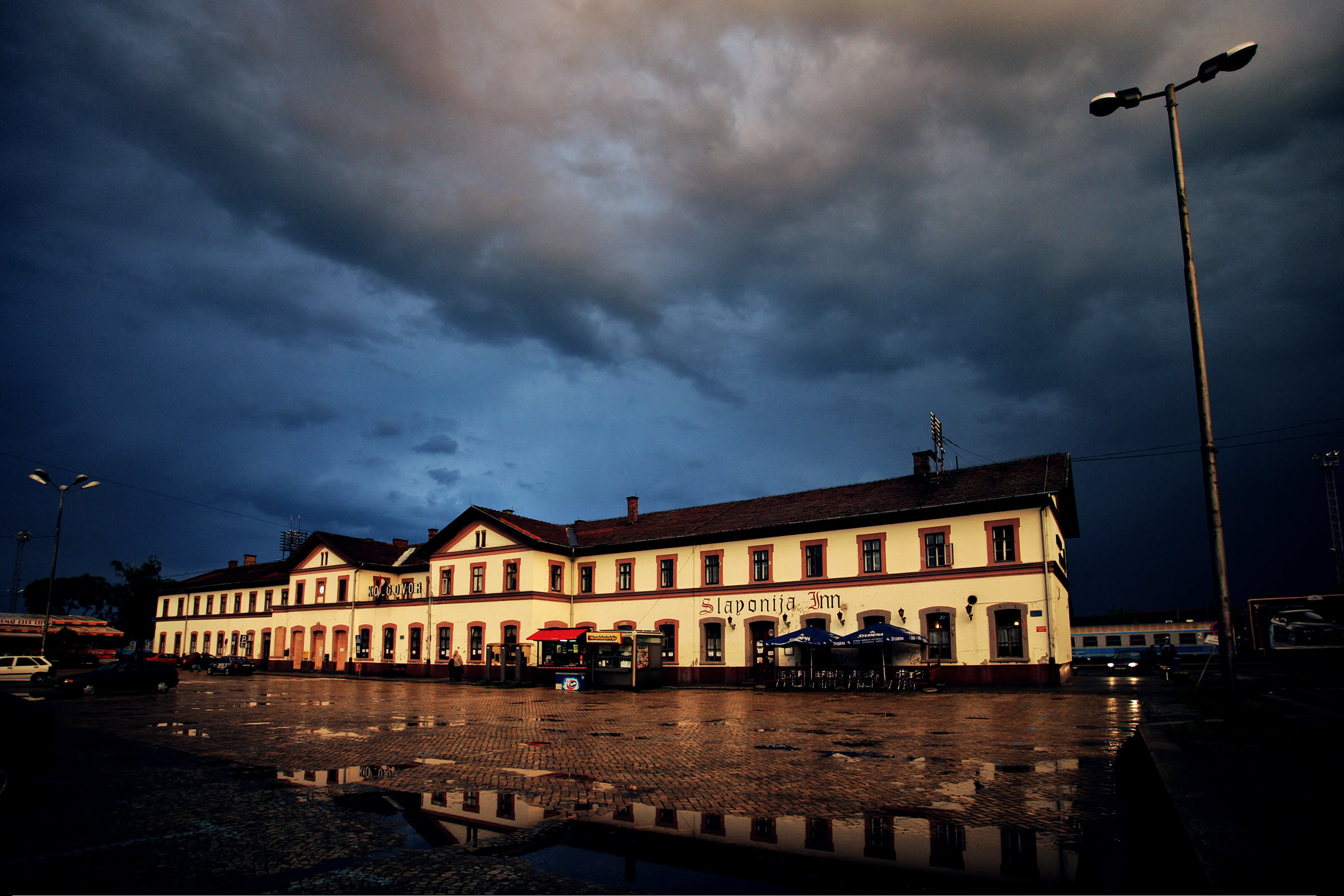 Osijek train station. A renovation to the building is planned for the near future © Romulić & Stojčić
Osijek train station. A renovation to the building is planned for the near future © Romulić & Stojčić
However, in February this year, Croatian Railways introduced four direct daily lines between Slavonski Brod and Osijek. And there will be a new tilting train line that will run between Zagreb to Osijek on Friday afternoon and from Osijek to Zagreb on Sunday afternoon, facilitating student travel. On October 15, the first low-floor train will run between Osijek and Vinkovci as an additional part of the renewal of their continental Croatia trains fleet in Slavonia. The welcome return of Croatia's second-oldest international rail line - linking Osijek to Pécs in Hungary, via Beli Manastir and Baranya - was introduced in late 2018. A motorway stretch between Metković and Dubrovnik, integrating the Pelješac bridge and the Croatian segment of the European corridor are the final big remaining projects in a three-decade-long undertaking to give Croatia one of the best motorway networks in Europe. Should Croatia's rail network be next? © Hrvatske Autoceste
A motorway stretch between Metković and Dubrovnik, integrating the Pelješac bridge and the Croatian segment of the European corridor are the final big remaining projects in a three-decade-long undertaking to give Croatia one of the best motorway networks in Europe. Should Croatia's rail network be next? © Hrvatske Autoceste
Access to Slavonia and Baranya will also be massively facilitated upon completion of the European corridor, which will connect North Europe to the Adriatic. Starting in Budapest, it necessitates the building of a bridge near Beli Manastir. Thereafter the motorway will pass by Osijek, connect to the Zagreb-Slavonia motorway near Lipovac, then pass through Bosnia and its capital Sarajevo and on to Ploče.
The removal of budget airline flights to the airport in Osijek remains a hindrance to attracting many international visitors to Slavonia and Baranya. However, with charter airlines facing the greatest uncertainty of all modes of transport at the current time, though their return is a must, it is perhaps now an ambition that should remain more long term. For the immediate future, improvements to rail travel look to be a brilliant way of opening up not only Slavonia, Baranya and Vukovar-Srijem, but also an eco-friendly access point capable of serving the whole of untapped continental Croatia.
For the latest travel info, bookmark our main travel info article, which is updated daily.
Read the Croatian Travel Update in your language - now available in 24 languages
Investments in Croatia: Cash for Health and Education Sectors Continue
Investments in Croatia come in various forms, and while we tend to read about either investors running for the hills when faced with Croatia's draconian love of red tape, or investments being made in the tourism sector along the coast, large sums of cash are continually being poured into both the healthcare and the education sectors, with one county standing out from the crowd.
As Poslovni Dnevnik writes on the 10th of January, 2019, as much as 10.5 million kuna has been invested in school renovations in Koprivnica-Križevci County, the co-financing of school transport, and the largest number of scholarships have been secured so far. One of the priorities of Koprivnica-Križevci County, which was defined in the county's development strategy, is constant investment in education that continued throughout 2018.
In addition to the large amount of money having been invested in school renovations, two capital projects for energy reconstruction are due to be set up. The involved schools are primary schools in Virje and Drnje, these projects are worth as much as 9 million kuna, and both schools will achieve heating savings of a massive 70 percent. Given the fact that the aforementioned county has recognised the importance of investing in energy efficiency, new contracts have been signed for the development of major energy renewal projects in Novigrad Podravski, Ferdinandovac, Đelekovec, and Veliki Poganac.
These investments in Croatia are more than praiseworthy, and in addition to improving the overall material conditions in schools, the county is continuing to co-finance student transport and support projects for students with disabilities and special needs, offering free school meals for students from less wealthy backgrounds, and more. In addition, last year the largest number of student scholarships was awarded to date, up to 35 of them, including those awarded to medical students, which is an important contribution to the project of the promotion of vocational professions.
Despite all of the above, 2018 will most likely be remembered for investments made in the health sector, and thanks to the joint cooperation of the county, the head of Koprivnica hospital and the parliamentary representatives with the Minister of Health, a long-awaited 10 million kuna magnetic resonance (MR) device arrived at Koprivnica hospital. Other capital projects include the very welcome eight-million-kuna "POZDRAV - Improvement of Primary Health Care in Koprivnica-Križevci County" initiative.
Make sure to stay up to date with investments in Croatia and much, much more by following our dedicated lifestyle and business pages.



